June/July 2023
NZ’S AUTHORITY ON FOOD TECHNOLOGY, RESEARCH AND MANUFACTURING


FEATURED IN THIS ISSUE:

June/July 2023
NZ’S AUTHORITY ON FOOD TECHNOLOGY, RESEARCH AND MANUFACTURING


FEATURED IN THIS ISSUE:
World Avocado Congress in Auckland
Dry Ageing of New Zealand Red Meats - Study
NZFSSRC – Annual Symposium, July, Dunedin
JUNE/JULY 2023 | VOLUME 23, NO.3
ISSN 2744-7308 (ONLINE) ISSN 1175-4621 (PRINT)
Copyright © 2023 Peppermint Press
No part of this publication may be reproduced or copied in any form by any means (graphic, electronic, or mechanical, including photocopying, recording, taping information retrieval systems, or otherwise) without the written permission of Peppermint Press. The views expressed in this journal are those of the writers and do not necessarily represent the view of the Publisher, the Scientific Review Board or NZIFST
Director and Editor
Anne Scott, Peppermint Press Limited anne@foodnz.co.nz
Director and Writer
Dave Pooch, Peppermint Press Limited davep@me.com
Advertising
Anne Scott, anne@foodnz.co.nz 021 901 884

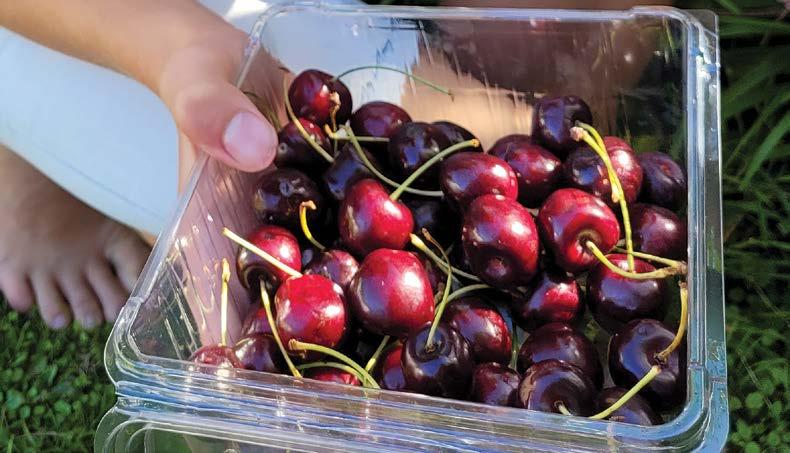
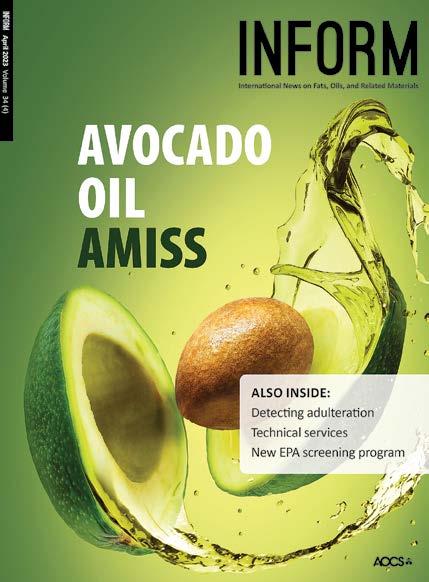

Design and Layout
Johanna Paynter, Pix Design
Regular Contributors
Phil Bremer, John D Brooks, Laurence Eyres, Ben Sutherland, Dave Pooch, John Lawson
Published by Peppermint Press Limited
Notice to Contributors
When submitting editorial for Food New Zealand please observe the following, Editorial to be submitted as plain text files, NO FORMATTING please. Images should be sent as high resolution .jpg or .tiff files. Do not embed images in word documents, send separate files. Any images smaller than 500 kb may not be printed as the clarity of the print may be compromised.
Advertisers
Material specification sheet and rate card on website, www.foodnz.co.nz
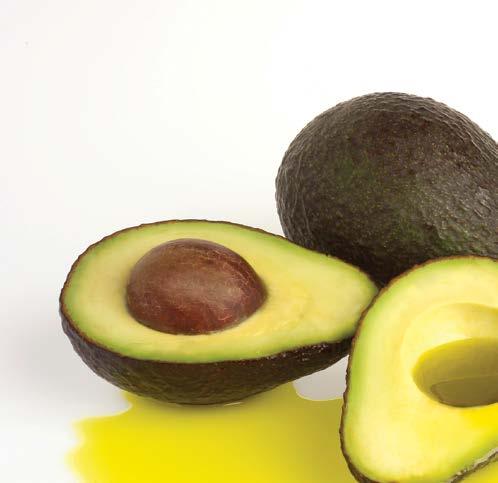
Executive Manager, Wendy Bayliss
PO Box 44322
Pt Chevalier Auckland 1022
New Zealand
Phone: 022 549 8483, Email: wendy@nzifst.org.nz
Website: www.nzifst.org.nz
Conference Handbook page 41
24 PACKAGING
2023 Australasian Packaging Innovation & Design Awards


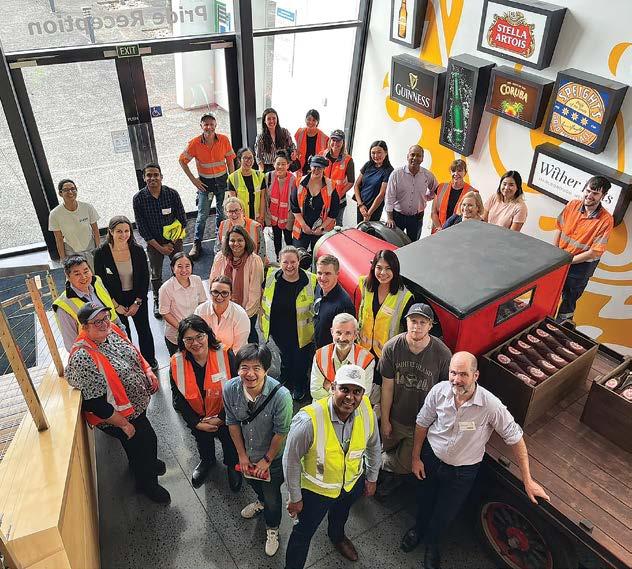

27 RESEARCH
Dry aging of red meat
Renyu Zhang, Carolina E. Realini & Mustafa M. Farouk
31 NZFSSRC
Cold plasma: a hot topic in food safety research

34 NZIFST N EWS INCLUDING
59th Conference update New Members
EHEDG Report Branch News
39 BOOK REVIEW
Meeting Change: – The New Zealand Red Meat Story, 1997 - 2022

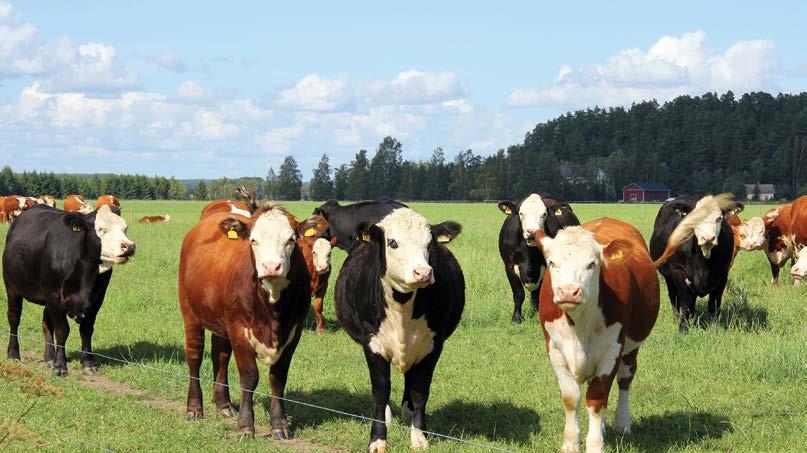
Margot Buick FNZIFST
JOIN NZIFST NOW for Professional Development Networking – connecting with your peers

Regular information about your industry
Recognition through awards, scholarships, travel grants www.nzifst.org.nz/join/
Cover image: What is a conference or congress for? It’s for like-minded people to gather and connect – and learn, both from presentations and from each other.
Next editorial and advertising deadline: July 20th, 2023
Features for August/September 2023
NZIFST Conference Review: Awards, highlights

As this will be my last editorial as President I would like to take the opportunity to say how much I have appreciated the privilege of being the President of the NZIFST and how much I have enjoyed my time in that role. I would also like to sincerely thank all the people who have supported me over the many years I have been involved with the NZIFST. I look forward to continuing my association with you and the Institute in the slightly less responsible role of Immediate Past President. Notable events during my two years as President include the retirement of our long serving, well respected, extremely competent and universally liked executive manager, Rosemary Hancock. While Rosemary is irreplaceable I was delighted when after a very thorough recruitment process, Wendy Bayliss accepted the position as our new Executive Manager. It has been very pleasing to see how well suited Wendy is proving to be to that role.
Highlights over the last two years include the success of our Annual Meetings and the grand way in which we discharged our obligations to IUFoST at their Congress in Singapore late last year. I would like to sincerely thank our sponsors for supporting us through the challenging times after the COVID mandated cancellation of our 2020 IUFoST Congress and express my deep gratitude to the conference team who ably guided us out of what could have been a significant financial hole.
During the IUFoST Congress in Singapore I was impressed by the role that IUFoST plays in giving scientists from developing countries a voice on the scientific world stage and I look forward to building a closer relationship between IUFoST and our membership.
The activity over the last two years that I believe will be of most value to the NZIFST in the future is the effort that has been devoted to reconsidering the purpose of the NZIFST, in the light of the rapid changes that are occurring in the food industry, and to considering how we can consequently best add value to our members and the food industry.
This activity has been led by our very able, savvy and hard-working Vice President Esraa El Shall, with strong support from the Executive, the Board and many Branch Committee Members. The review has led to the development of new Vision and Mission Statements and a planned series of goals (pillars) and workstreams which we will outline over the coming months. There will be an opportunity for all members to contribute to helping us to achieve our goals and I strongly encourage you to get involved.
The 2023 AGM will see Professor Richard Archer’s term as Immediate Past President come to an end. Richard's astute leadership and broad experience has been a great boon to the Institute and on your behalf I would like to thank him for the long hours he has spent on our behalf. It is due to his canny guidance that the Institute is in its current sound position. There are many more people I would like to thank including many former Presidents and long serving members who continue to support the Institute. However, the one other person that I will thank by name is the Editor of FoodNZ and long serving NZIFST member and former President, Anne Scott who was always willing to provide sage advice to me.
The programmes for the joint New Zealand Food Safety Science & Research Centre Annual Symposium and NZIFST Annual meeting in Dunedin are looking fantastic, the social activities are top notch and the long range weather forecast for Dunedin in July is looking spectacular. Once again I warmly invite you to our Annual Conference and encourage you to register ASAP.
I wish the incoming President and Executive all the best
Phil Bremer, FNZIFST, President, NZIFST
Mark Piper has been appointed as CEO at Plant & Food Research. He takes over from David Hughes who has been CEO since 2018 and announced his retirement in late 2022.
Mark is an experienced senior leader with 30 years’ global experience in the food and primary sectors. He is passionate about leading and developing teams, building a strong positive culture, and bringing out the best in the people he works with. He has a strong track record of delivering financial results and operational impact.
Board Chair of Plant & Food Research, Nicola Shadbolt, said the Board made the appointment from a field of high calibre applicants.

“Mark’s passion for science is clear and he takes great energy from its potential to create a more positive and sustainable future. I know that Mark will lead Plant & Food Research with innovation, integrity, and impact,” she added.
Mark joins Plant & Food Research from Fonterra Cooperative Group, where he spent the last five years as Director Research & Development, Category Marketing & Strategy, leading a team of around 400 staff. During his 30 years with Fonterra, Mark held roles based in New Zealand and internationally.
Mark has a strong connection to the Manawatū and will be formally
based at Plant & Food Research’s Palmerston North site. David Hughes will work alongside Mark in an advisory capacity during May, with a particular focus on supporting Mark to make strong connections with Plant & Food Research’s key external partners, customers and stakeholders.
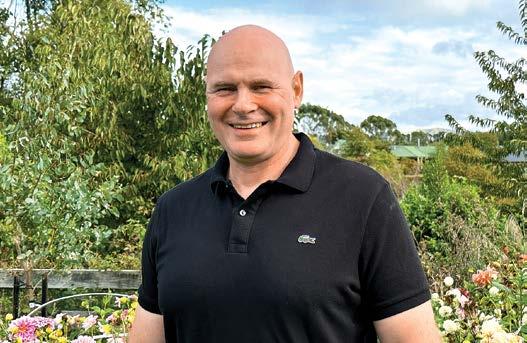
Nicola Shadbolt acknowledged the significant contribution made by David Hughes during his time at Plant & Food Research, building the platform that Mark can now use to take the business to the next level.
“The Board offers its sincerest thanks to David for his commitment and huge contribution to Plant & Food Research,” she said.
NZ’s original oat milk brand ends a four-year search for a New Zealand factory to turn Kiwi oats into world-class oat milk Otis co-founders Tim Ryan and Chris Wilkie have been on a mission to return to making their oat milk in New Zealand ever since they launched in Lincoln, Canterbury in 2018, as the very first New Zealand oat milk brand.
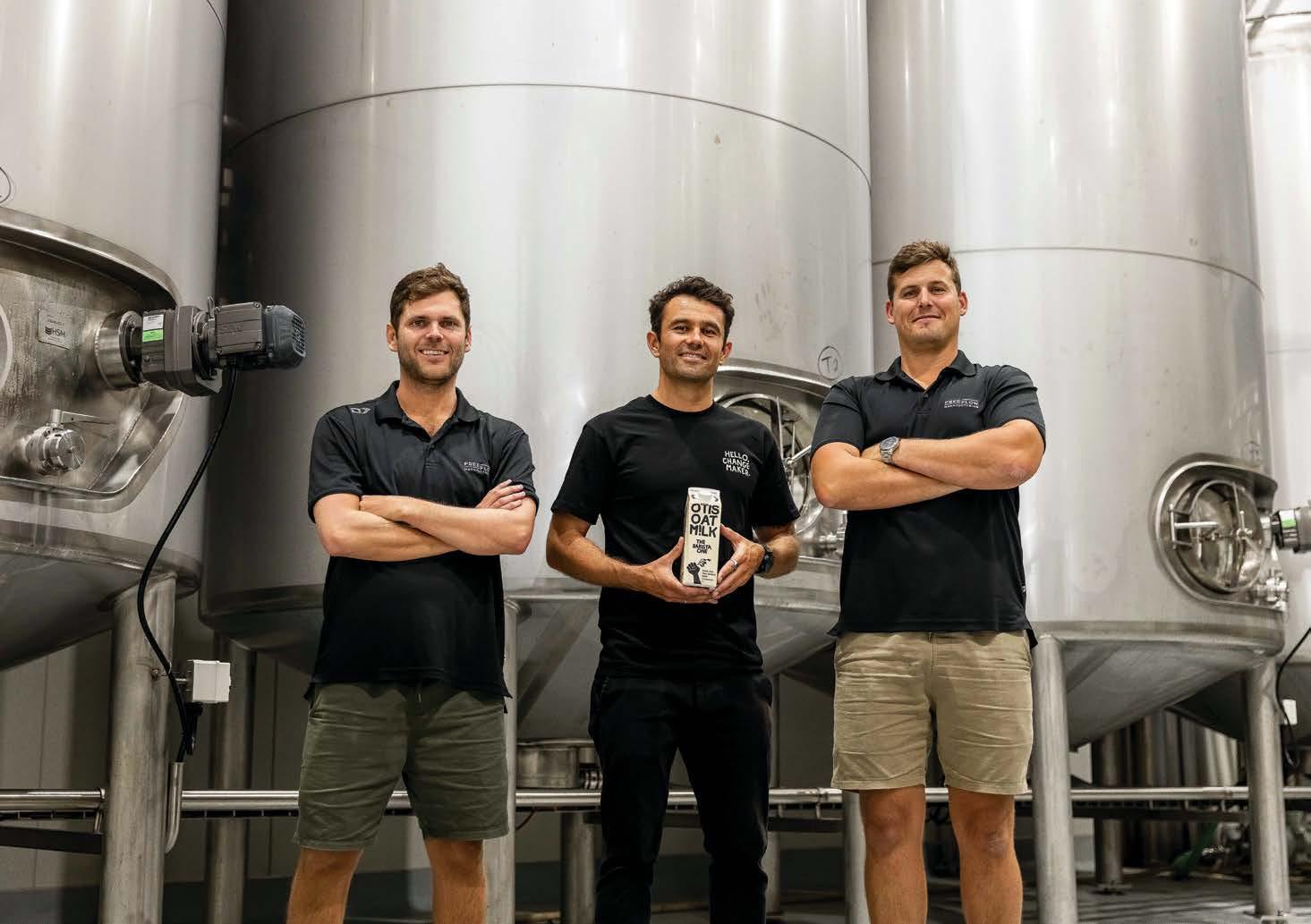
“We weren’t prepared to compromise on the nutritional quality of our oat milk so we shipped our New Zealand-grown oats to Sweden for manufacture due to the lack of a local factory with the technology required to produce premium oat milks to the gold-standard we demand.”
“The journey to setting up our own factory has involved seven feasibility studies over eight different sites across New Zealand, costing a lot of money and years of graft for our small start-up. We’re thrilled to have finally cracked this in a partnership with Aucklandbased Free Flow, signing on as their first customer, with Otis rolling off their lines from late 2023,” said Ryan.
The new Free Flow manufacturing plant will be one of the world’s most technically advanced plant-based milk manufacturing facilities, capable of making 50 million litres of plant-based beverages each year.
It is being developed with the world’s leading expert on oat milk, Sweden’s Angie Triantafyllou. Referred to as the “godmother of modern oat milk” for her patented innovations, the ex-Oatly founder is now Chairman of the Board at Swedish plant-based technology
company Cerealiq and has been heavily involved in the development of the new facility.
Otis was the first oat milk maker in New Zealand to use Cerealiq’s patented enzyme technology. Now, the technology will be available in New Zealand for the first time, enabling Otis to produce oat milk in their backyard.
“The new facility will produce oat milk to world-standard levels of beta-glucan, the nutritional gold component found in Otis and premium oat milks. It helps the body to maintain stable cholesterol levels,” she said.
Ryan says Free Flow and Cerealiq’s state-of-the-art technology will be available to other plant-based beverage makers in New Zealand, putting an end to reliance on importing goods in favour of New Zealand-made products.
The plant-based business works closely with the New Zealand Oat Industry Group, Harraways, and around 50 arable farmers who operate a crop rotation system, ensuring New Zealand-grown oats remain nutritionally superior to other varieties in the world.
Ryan says sales of plant-based milk alternatives have skyrocketed in recent years, outpacing traditional dairy milk, with no sign of slowing. “Grocery spending on plant-based milks in New Zealand increased by 44% from 2019 to the end of 2022, with sales jumping from $61 million to $88 million.”
“We’re beyond excited to return Otis’ manufacturing to its home in New Zealand. It’s been a hard slog to find the right partner to make our world-class milk in New Zealand, but we’ve cracked it, and finally we can say Otis is 100% homegrown – from crop to cup.”
Cawthron Laboratories, the analytical testing arm of Nelson’s Cawthron Institute, has announced it will open a new analytical testing laboratory in Auckland in mid-2023.
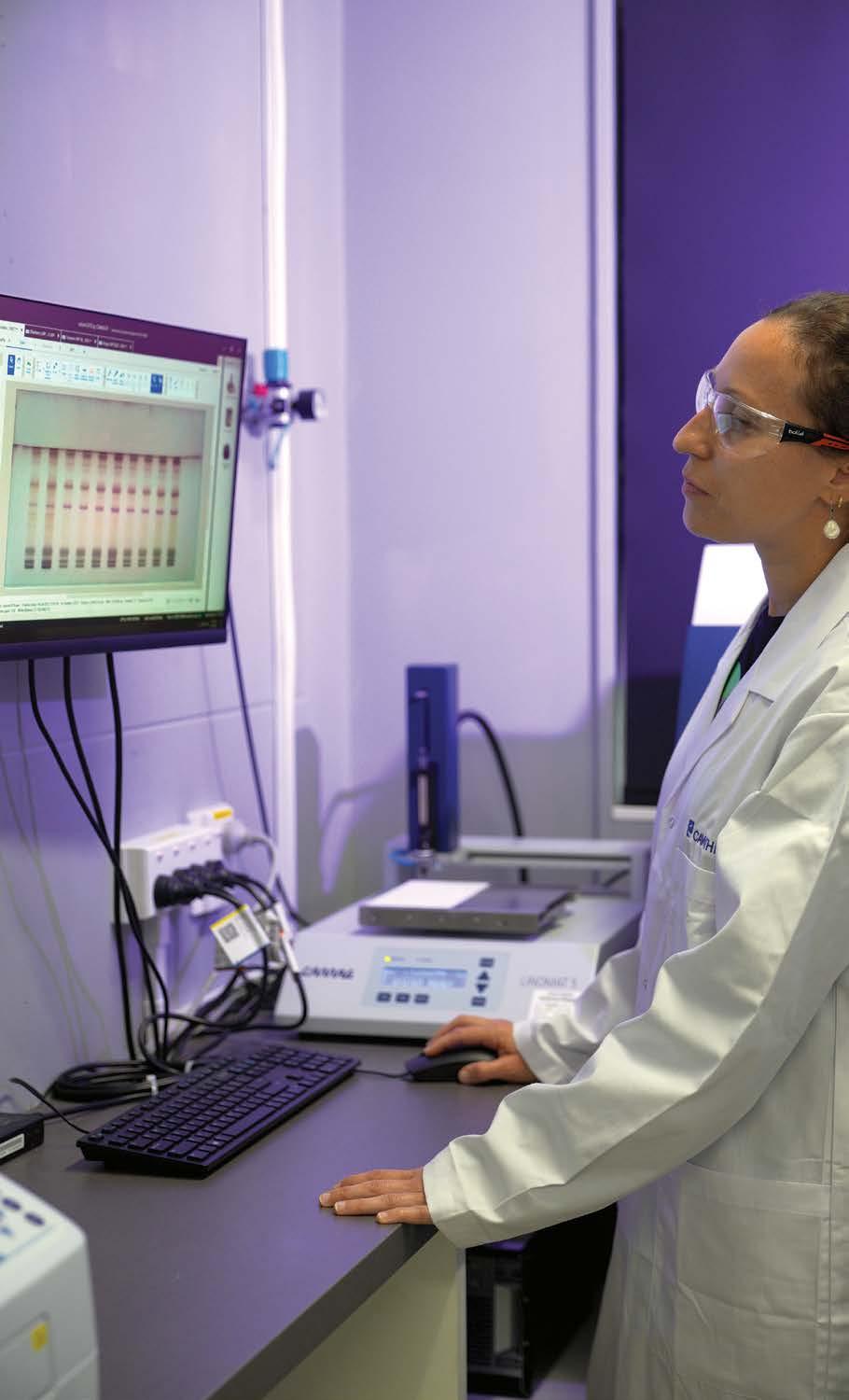
Cawthron Laboratories offers customers a broad spectrum of food testing and product analysis services.
Located in Māngere, the new facility expands Cawthron Laboratories’ service capacity and will provide a full spectrum of testing services to customers in any part of the country, with prompt turn-around times for results, regardless of location.
Cawthron Laboratories Manager, Paul Parker, says this expansion builds on the strong relationships Cawthron already has with customers in the North Island and creates opportunities for new customers by increasing confidence in the accessibility and reliability of their testing services.
“Our fully accredited laboratories have provided testing services to New Zealand’s food and natural products sector for over 40 years and we’re really proud of our continued growth.”
“Opening a North Island laboratory is an exciting new chapter for us and one that will help us forge new relationships in the North Island.”
Parker says Cawthron Laboratories’ customers highly value the flexibility and tailored solutions that his team of technicians and research and development scientists can offer, which is why accessibility is an important element.
“Many of our customers absolutely depend on us to give them line-of-sight and direct access to technical support because they have tight timeframes to meet for export and food safety requirements.”
Cawthron’s testing capabilities range from seafood, oils and milk powder to a range of other food and natural products playing a critical role in supporting New Zealand’s food system.

Although the new laboratory isn’t set to officially open until mid-year, customers in the North Island are welcome to make enquiries now about the services available.
“We will officially hit the ground running in early July, but we are eager to start talking to customers now about the difference we can make to their business.”
Cherries can join the ranks of blueberries and other colourful fruits grown in New Zealand with their impressive antioxidant and vitamin profile, according to work done at the Riddet Institute, at Palmerston North’s Massey University.
The research into New Zealand cherries was jointly funded by a grant from the High-Value Nutrition National Science Challenge, Cherri Health and Manufacturing (CH&M) and the Bioresource Processing Alliance with Cherri Global.

The work was carried out by the scientists at the Riddet Institute and Plant & Food Research over the course of several months late last year.
Riddet Institute lead scientist Dr Ali Rashidinejad says this study is the first of its kind to systematically analyse the nutritional and bioactive (phytochemical) compositions of the main cherry varieties grown in New Zealand. Earlier research has focused on cherries grown overseas.
Cherries have been recognised for providing significant health benefits such as reducing markers for oxidative stress, inflammation, exercise-induced muscle soreness and loss of strength. They are also thought to improve blood pressure, arthritis, and sleep. There are 17 main varieties grown in New Zealand. This study focused on six top-selling varieties grown in Cherri Global orchards in Otago: Bing, Rainier, Kordia, Lapins, Sweetheart and Staccato.
The study also compared fresh and packaged cherries to learn if nutrients were lost during processing.
Researchers looked at proteins, carbohydrates, sugars, fats, fibre, fatsoluble vitamins, and water-soluble vitamins.
“Basically, in terms of nutrient profiles, we have explored everything we could. And the same with the bioactive compounds,” Dr Rashidinejad says.
“We concluded that all six varieties were rich sources of different nutrients: minerals, vitamins, amino acids, and phenolic compounds – the antioxidants. The phenolic compounds, were what most interested us because they are potent antioxidants with numerous scientifically proven health-promoting properties.”
Dr Rashidinejad says almost 30 phenolic compounds were studied, in collaboration with Plant & Food Research, using high pressure liquid chromatography techniques.
Most of these compounds were present in differing amounts, with vitamins A, C, E, B1, B2, B3, B6, B9 (folate), and K also detected and quantified in the fresh, packaged, and frozen cherry samples. High concentrations of vitamin C were confirmed.
The cherry season is quite short, with early varieties ripening in late December and all finished by early February. The delicate stone fruit are not easy to grow, requiring extensive bird protection, and cherries are labour intensive to pick and process.
After picking, cherries are washed at pack houses and exported or distributed around the country, either as fresh or frozen product. The comparison between fresh and packaged fruit found processing had varying effects on the nutrients and bioactive compounds of the fruit.
“We found only some minor differences and little effect from the time and the process of washing, drying and packing,” Dr Rashidinejad says. “It’s good news that the transport and packing does not have a major effect on the health-promoting compounds.”
Cherries grown in New Zealand are officially jam packed with components essential to human health, confirmed by recent research
“This has been a comprehensive study. The hypotheses have been confirmed: New Zealand cherries are a great source of antioxidants and nutrients, and that processing has a little or no impact on their nutritional properties.”
He says future steps would be finding ways to use the waste products produced during cherry processing. It has been estimated that 8000 tonnes of cherry waste are produced in New Zealand every year. Because washing and packaging does not significantly reduce the nutrient profile of the fruit, this could lead to new uses for the waste or the seconds that don’t get to shop shelves.
Dr Rashidinejad says such waste from cherries could be converted into a high-value ingredient for the food industry in the future. This could be in powdered or frozen form, or as a component in another food product.
The Riddet Institute is a Centre of Research Excellence (CoRE), hosted by Massey University, which focuses on fundamental and advanced food research. Cherri Global, based in Hawke’s Bay, has a business division focused on developing a range of Cherry products focused on health and eliminating waste.
As traditional farmers and growers invest in new technology and equipment – automation in fresh produce operations is on the rise. Check weighing is an important part of the packaging and inspection process. While the primary function of this equipment is to monitor end weight of your product – it also helps you to gain peace of mind for your business, and your customers.
Check weighing is key to delivering what your consumers expect by providing accurate verification of the package weight or count and detecting missing components. A variety of check weighing equipment is available — for a wide variety of applications and this equipment will bring speed and accuracy to your operation.
In a perfect world, every package would weigh the same. But weighing processes are not infallible and equipment issues, problems with base line zeroing, product build up, or even product density can cause variations. Product characteristics, product piece weight, temperature and moisture can all affect the accuracy of what is portioned out.
Ready to take your product inspection to the next level?
Industry-leading check weighing equipment will help you to make informed decisions; like identifying trends periodically during production, or on a continuous live basis. They are easily programmed — with a range of features that can handle different types of produce.
The checkweigher is a compact piece of equipment. The best ones will be simple to operate and easy to clean. They are also available with integrated metal detection and reject systems for expanded produce inspection — should your operation require it.
Consumer regulations dictate that a packaged product cannot be sold under the marked weight. To comply, many fresh produce processors increase pack weight to such a level that an “underweight” will not occur. When portioning uses methods such as multihead weighing, volumetric weighing (auger or rotary cup filler), or even piece counting, statistical mean and standard deviation will occur in every batch.

Example: A 200 gram pack weight has a standard deviation of 2 grams. A processor may set the packaged weight to 206 grams, as a mean number and to ensure no under weights. This translates to an extra 6 grams per package and around 3 standard deviations, resulting in a shift of the statistical “bell curve”, so that a max weight of 212 grams can be produced.
Using a checkweigher allows you to easily monitor where the mean is trending and the equipment will raise the alarm if weights start to drift too high.
Heat and Control is a privately-owned company with a global team that has built an extensive knowledge bank and developed a wealth of experience and expertise. Access to production and technical support from a network of engineers, food technicians, field service technicians, skilled tradespeople, and support teams provide food manufacturers with confidence to achieve production goals.
The new Lory® IsoCrisp variety is made from European wheat, has a neutral taste and can be individually flavoured

Ingredients specialist Loryma is expanding its Lory® IsoCrisp range with a variant made from wheat. The extruded crispies are low in sugar but rich in protein. This means they not only add a pleasant crunch to biscuits, bars, muesli and granola, as well as other snacks, but also provide a plant protein boost. The new Lory® IsoCrisp variety is made from European wheat, has a neutral taste and can be individually flavoured.
The crispy, round extruded product consists of wheat protein, wheat starch, rice flour and cocoa powder. As a result, the new variant contains little sugar and saturated fatty acids, and has a protein
The JASCO V-700 range of UV/Vis-NIR spectrophotomers are high-quality instruments with a variety of sampling and data analysis options for a broad spectrum of users. The V-700 series comprises five distinct models covering the entire spectrum ranging from the far-UV (187 nm) to near-IR (3200 nm). These instruments are also compact in optical design, therefore reducing their footprint in the laboratory. All models in the V-700 range are double-beam types for superior performance, reliability and data quality.

JASCO also offers optional software to meet specific user requirements. As an example, for food & beverage applications, one optional software available is the PLS quantitative programme. This allows users to perform simultaneous quantitative analysis of multi-components in food products. Subtle differences in spectra, which may not be identifiable by human eye, can be extracted by the PLS software for better visual comparisons.
As part of the standard Spectra Manager software, users will also have access to validation and daily check software. This allows users to perform regular check-ups of the instrument; to monitor
content of 71g per 100g. The vegan, tasteless crispies are suitable for end products in the high-protein, low-carb and sports nutrition segments, among others. Manufacturers can also offer the proteinrich crispies, which have a diameter of about two millimetres, in their original form – for example, as crunchy highlights for muesli. For further information, please visit: LinkedIn
Loryma, a member of the Crespel & Deiters group, is a producer of globally distributed wheat proteins, native and modified wheat starches, extrudates and functional blends with an expertise of more than 40 years. The company is located in Zwingenberg (Germany).
performance; and quickly identify issues that may require service assistance. All spectroscopy products from JASCO utilise the Spectra Manager software hub, with each instrument having their own specific software. Familiarity with one instrument then opens the door to using other JASCO instruments.
For customers with limited budget or bench space, JASCO also offer an LCD touch display: Intelligent Remote Module (iRM1000). This accessory contains a simplified version of the Spectra Manager software, allowing users to easily acquire spectra and export data (via USB) without the need for direct connection to a PC. www.bio-strategy.com
Enjoy your cup of java
John Brooks' view of the food world through the lens of a microbiologist.
Much of my work as a food microbiologist has involved food spoilage and food poisoning, with from time to time a large helping of singlecell protein and biofilm research. I have written about these things both in Sliding on and my own food safety blog here. As Monty Python would say “Now for something completely different”. There is mounting evidence that our gut biome significantly impacts our health and may even affect our brains. It follows that our food and drink may interact with our gut biome and thus indirectly affect our behaviour.
In the past it has been claimed that coffee can cause cancer. It will no doubt come as a relief to many of us that a review of more than 1,000 studies by the International Agency for Research on Cancer (IARC) in humans and animals failed to find adequate evidence to indicate that coffee is a carcinogen. There may indeed be an inverse relationship between drinking coffee and some cancers.
In a relatively small survey, a team from Baylor College of Medicine in Houston, Texas examined “the association between caffeine consumption and the composition and structure of the colonic-gut microbiota.” They managed to find 34 male participants with a normal colon in one hospital, prepared to undergo a screening colonoscopy and endoscopy to determine the health of their colons. The researchers obtained snap-frozen colonic mucosa biopsies from various segments of these individuals’ colons, and extracted microbial DNA, then performed 16s rRNA gene sequencing analysis. The researchers claimed that their work was different from most studies which focus on the faecal biome. In addition to this invasive investigation, the participants completed a food frequency questionnaire that was actually designed to evaluate the daily intake of coffee. The results were divided into “high” and “low” coffee consumption’ based on the resultant intake of caffeine. The questionnaire did not reveal any information on how the coffee was prepared or the brands used.
Perhaps not surprisingly, a high intake of caffeine did have an effect on the gut microbiome but the effect was independent of the participants’ age or the quality of their diets. High caffeine consumption was associated with high levels of the bacterial genera Faecalibacterium and Roseburia, but low levels of Erysipelatoclostridium. These bacteria are regarded as part of the normal gut flora, but elevated levels of E. ramosum have been linked with metabolic syndrome and were found in animal studies to be associated with diet-induced obesity. Several other genera of bacteria were also found to be present at higher levels in the flora of the high-intake volunteers.
The authors concluded that “Higher caffeine consumption was associated with increased richness and evenness of the mucosaassociated gut microbiota, and higher relative abundance of antiinflammatory bacteria, such as Faecalibacterium and Roseburia, and lower levels of potentially harmful Erysipelatoclostridium.”
Many studies now are suggesting that there is a two-way interaction between the gut microbiome and the brain. Some of it reads like science fiction, but there is good evidence to support this. For example, production of short-chain fatty acids, such as butyrate, by bacteria in the gut when they break down fibre, may be associated with brain function. Butyrate-producing Faecalibacterium and Coprococcus bacteria were consistently associated with higher quality of life indicators. Depletion of Dialister and Coprococcus spp. is consistently associated with depression. The term ‘psychobiotic’ has been coined for microbiota-based interventions that have a beneficial effect on the human brain (2). We know that certain microbes in the gut can modulate the immune response in ways that affect the brain and also produce signalling molecules that regulate neuron activity.
Of course, studies with humans are fraught with difficulty. We eat a wide variety of foods and consume all sorts of alcoholic and nonalcoholic beverages and all of these in different amounts. Some of us take medication or have high-stress jobs, while others are able to take life at a much slower pace. There appears to be no barrier to our effecting change in our gut biota by altering our diets and this doesn’t involve buying special foods from specialist stores. A Mediterranean diet that's high in fibre, particularly from vegetables, is thought to be beneficial and in a small study in which subjects were given high fibre, prebiotics and fermented foods, the experimental group reported being less stressed than the control group. Perhaps it’s time for us to concentrate more on looking after our microbiota.
Now, I’m off to make a strong cup of coffee with cream.
References:

1. Dai, A. Et al. (2023) The Association between Caffeine Intake and the Colonic Mucosa-Associated Gut Microbiota in Humans – A Preliminary Investigation. Nutrients, 15, 1747. https://doi. org/10.3390/nu15071747
2. https://www.bbc.com/future/article/20230120-how-gut-bacteria -are-controlling-your-brain Caffeine. (2023, May 2). In Wikipedia. https://en.wikipedia.org/ wiki/Caffeine

World Food Safety Day this year is 7 June 2023. It’s a day that could easily pass under the radar for most people, however it is an important date in the calendar for food and health regulators, and for our communities. We all have a role to play in upholding food safety, right along the chain from pastures to home kitchens. This is the fifth year that the day has been marked around the globe – driven by the World Health Organisation (WHO) to draw attention and inspire action to help prevent, detect and manage foodborne risks, contributing to food security, human health, economic prosperity, agricultural production, market access, tourism and sustainable development.
This year’s theme, chosen by the WHO, fittingly for New Zealand Food Safety (NZFS) is ‘Food Standards Save Lives’. Our team of science and policy experts are passionate on this subject as it is one of the driving forces behind our overall mission to ensure that food produced and imported into New Zealand is safe and suitable. One in ten people world-wide fall ill from contaminated food each year – or 1.6 million a day on average. Here in New Zealand around 200,000 people a year get sick from food-borne illness. We know that microbial, chemical or physical contamination of food can be reduced or minimized through the implementation of food safety standards. To quote the WHO, “food safety standards are designed to protect the lives of all, and the livelihoods of many” They establish the criteria which food should meet to protect consumers and establish confidence in the product.
New Zealand actively contributes to the development of world food safety standards at various international fora. From the Codex Alimentarius Commission for Food Safety, part of the WHO, to the World Organization for Animal Health (OIE) – to name a couple New Zealand works closely with Australia to develop joint food standards for food labelling and composition through arrangements such as the Australia New Zealand Food Standards Code and the Trans-Tasman Mutual Recognition Agreement.

In New Zealand our food safety system is underpinned by four key pieces of legislation including the Food Act 2014. The Ministry for Primary Industries, via NZFS, develops food standards that food businesses must meet. This includes setting thresholds for contaminants and residues, including those left by pesticides and veterinary medicines used in growing plants and animals for food.
The fortification of flour with the B vitamin folic acid is a good example of how food safety standards benefit populations. On 8 July 2021 the Government announced its decision to mandate the fortification of non-organic wheat flour used for bread making
with folic acid. This decision, to change from the current voluntary fortification of bread to mandatory fortification of flour for bread making, aims to improve health outcomes and health equity, while considering cost-effectiveness and consumer choice. The health benefits and risks of folic acid fortification of food authored by thenPrime Minister's Chief Science Advisor Sir Peter Gluckman FRS FRSNZ and the Royal Society, states: “There is compelling evidence that mandatory folic acid fortification is associated with lower rates of Neural-Tube Defects (NTD), and that taking folic acid supplements at the recommended doses in pregnancy has no adverse effects on pregnancy outcome or the child’s health.”
We will be looking closely at NTD data post-mandatory fortification of flour in New Zealand. It is expected that results will follow a similar pattern to other countries where bread flour and bread have been fortified with folic acid. The Gluckman and Royal Society report notes that, “New Zealand’s NTD rate is 10.6 per 10,000 total births (live births, foetal deaths, and terminations), similar to other countries with a voluntary regime, such as Ireland (with a rate of 10.4) and the United Kingdom (with 12.6). However, it is higher than countries where mandatory fortification has been introduced, including Australia (with a rate of 8.7), Canada (with 8.6) and the United States (with a rate of 7).” For New Zealand, Māori babies are over-represented in the statistics, the prevalence of NTD live births for Māori, Pasifika and European/other women was, respectively 4.58, 4.09 and 2.81.
There was a 2-year transition period for the flour millers to make the necessary changes, which ends on 14 August 2023. By mid-August 2023, flour millers must comply with Standard 2.1.1 – 5 (a) Cereal and Cereal Products of the Australia New Zealand Food Standards Code, which outlines that non-organic wheat flour that is sold as suitable for making bread must contain no less than 2mg/kg, and no more than 3mg/kg, of folic acid.
New Zealand Food Safety has developed guidance with the millers dosing the flour with folic acid and the food businesses using the fortified flour to help them understand and meet the standard. Guidance will cover the monitoring and testing of folic acid levels at the mill to ensure desired public health benefits are achieved, and for food businesses who are using the fortified flour, the information they must provide customers on food labels or in-person.
World Food Safety Day is a timely reminder of the essential work that people in our food safety sector across New Zealand carry out every day for the benefit of the health and wellbeing of our people, ensuring food security and maintaining and growing our important food and beverage international economy – thank you for everything you do.
You can find more information on our website or contact info@mpi. govt.nz

Good things come to those who wait and now it seems food technologists are having their moment in the sun. I know this as my boss asked me what it’s like to be a superstar – in the world of food technology, that is. Our time to shine has come as venture capitalists and entrepreneurs look to us to help save the planet through the advent of cellular agriculture.
At Food Standards Australia New Zealand (FSANZ) we have certainly been waiting and preparing ourselves for the development of cellbased meat. It’s almost 10 years since Mosa Meat produced the first cell-based beef patty. In that time we have been watching from afar developments in the US, Europe, Israel and other regions. But we’ve not been idle. FSANZ has published information, spoken to a host of companies, engaged with other regulators and presented at many forums. We’ve also had a guiding hand in the recently released WHO Report on Safety of Cell-based Food Products posted here.
Everything seems to be aligning for the rapid development of cellbased foods. Concerns around food security, biodiversity loss, land clearing, climate change and unsustainable use of terrestrial and marine ecosystems are highlighting the increasing challenges in producing food and fibre for the planet's growing population. Given the urgency to address these issues, can cell-based foods provide part of the solution? Only time will tell, but at FSANZ we are starting our regulatory journey in assessing the safety of these foods.
FSANZ recently received its first application from an Australian company vowing to pioneer cell-based food in Australia and market their product in the wider Pacific region. The assessment of this application is a welcome challenge, not only for our food technologists, but all the scientists at FSANZ – microbiologists, biotechnologists, toxicologists, nutritionists and dietary exposure analysts. We’re now busy with our assessment of the public health and safety considerations of this new ‘novel food’, having regard to the potential for adverse effects in humans, composition or structure of the food, its production process, the source from which it is derived, patterns and levels of consumption and any other relevant matters. This new food requires a complex and involved assessment of not only the final food, but also the process to produce it and other relevant matters. These include a range of sociocultural aspects:
• How will it be perceived by consumers?
• What is the economic impact or benefit of the new food?
• What should the all-important naming and labelling of such products look like?
Our social scientists, labelling experts and economists will diligently work through the pre-market assessment, the findings and recommendations of which will benefit the entire sector and help smooth the path for the next applications coming through.
We’ve also engaged heavily with other regulatory agencies such as the Singapore Food Agency and US Food and Drug Administration to ensure best practice in and harmonisation of risk assessment. FSANZ is also engaging with Cellular Agriculture Australia, a not-for-profit organisation enabling the future of cellular agriculture in Australia through awareness, education, research and advocacy to enable a path to efficient regulation for this sector. After all, being entrepreneurs does not necessarily mean they are regulatory experts as well.
Our planning and assessment of this first application will stand us in good stead as cell-based products could potentially come in thick and fast when the sector overcomes high costs and scale up challenges. Mosa Meat have just opened a vast "scale-up plant"’ in the Netherlands as it edges closer to commercialisation. And we also need to be ready for the plethora of other products this technology lends itself to. OK, there’s the run of the mill mincemeat, but think caviar, Wagyu steaks, Dokdo Shrimp, precision fermentation of specific proteins, lipids and even, potentially, Woolly Mammoth meatballs! Any potential businesses or start-ups reading this are encouraged to contact FSANZ to support the pre-assessment and application processes.
Regardless of whether we food technologists can save the planet or not, what’s certain is that we require innovative technologies if we are going to feed the planet into the future. Just as fermentation, drying and salting were used in prehistoric times, we are now seeing innovation in science and modern technologies that can be applied to food manufacturing, cellular or otherwise.
What will the next 10 years hold? Certainly more choice for the consumer in terms of protein sources. While we might not see a cellbased meat fermenter sitting on the kitchen bench next to the slow cooker, we could see 3, 4, 5 or 6D printers make an appearance to help you get your protein fix. All this means exciting times ahead for the superstar food technologists and our regulators who must continue to ensure a safe food supply while supporting a strong, sustainable food industry that benefits consumers and offers diverse, affordable food choices.

A regular roundup of news and opinion from the Oils and Fats Group of the New Zealand Institute of Chemistry.
The Australasian section of the American Oil Chemists' Society (AAOCS) is hosting a conference on "Future of lipids; health and sustainability"
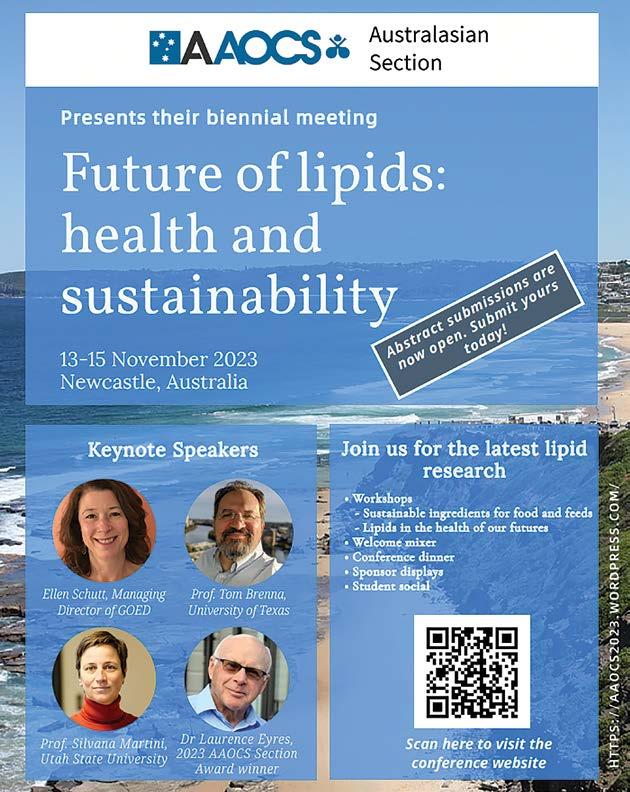
It will be held at Noah's on the Beach in Newcastle Australia Nov 13-15th 2023
The theme of this year's event is Future of lipids: health and sustainability and aims to look at the future of fats and oils in research and industry.
The programme will present the latest science and industry updates relating to edible oil and ingredient supply, biotechnology, manufacture of fat-based products, nutritional research, oil analysis, latest developments with omega-3 oils, dairy lipids and other activities that support the industry. Furthermore, planned workshops led by international experts, are in planning to occur prior to the conference.
Two workshops will be held on Monday 13th November 2023. These workshops will run concurrently and are:
• Sustainable ingredients for food and feeds (focus of novel lipids and protein products entering our food systems)
• Lipids in the health of our futures (focus on nutrition)
AAOCS2023 aims to provide an opportunity to learn and share science and industry progress related to all aspects of fats and oils. We aim to continue to provide a social setting where the latest in the oil and fats industry, science and health can be discussed and connections made or renewed.
For many people dealing in oils there is come confusion between enforceable legislation/compliance and standards for identity. This was recently illustrated at the World Congress on Avocado Oil where an afternoon session debated the whole issue of standards and adulteration. Professor Selina Wang, a keynote speaker, has published several articles showing that of 82% of avocado oil in the USA is adulterated, hence why the bottles are so cheap and are threatening the existence of genuine Avocado oil from countries such as New Zealand.
When the situation was looked at a few years ago by this reviewer many samples were seen to be fraudulent and not disguised particularly well. So, everyone knows what is going on but what can be done about it?
In Australia, a new Australian standard for olive oil was created around a decade ago and fortunately the supermarkets welcomed it
and insisted suppliers of Virgin oil met the standard. This resulted in a vast improvement of oils on the shelves: you need the active involvement of the retailers to make any progress. It appears that in the USA, price is the most important criteria, and they ignore fraud.
Codex standards and related texts are voluntary in nature. They need to be translated into national legislation or regulations to be enforceable.
General Standards, Guidelines and Codes of Practice: These are the core Codex texts and apply to all products and product categories. These texts typically deal with hygienic practice, labelling, additives, inspection and certification, nutrition and residues of veterinary drugs and pesticides.
The Codex Alimentarius, or "Food Code" is a collection of standards, guidelines and codes of practice adopted by the Codex Alimentarius Commission. The Commission, also known as CAC, is the central
Inform Magazine, April 2023 contains an article on the adulteration of Avocado Oils in the US
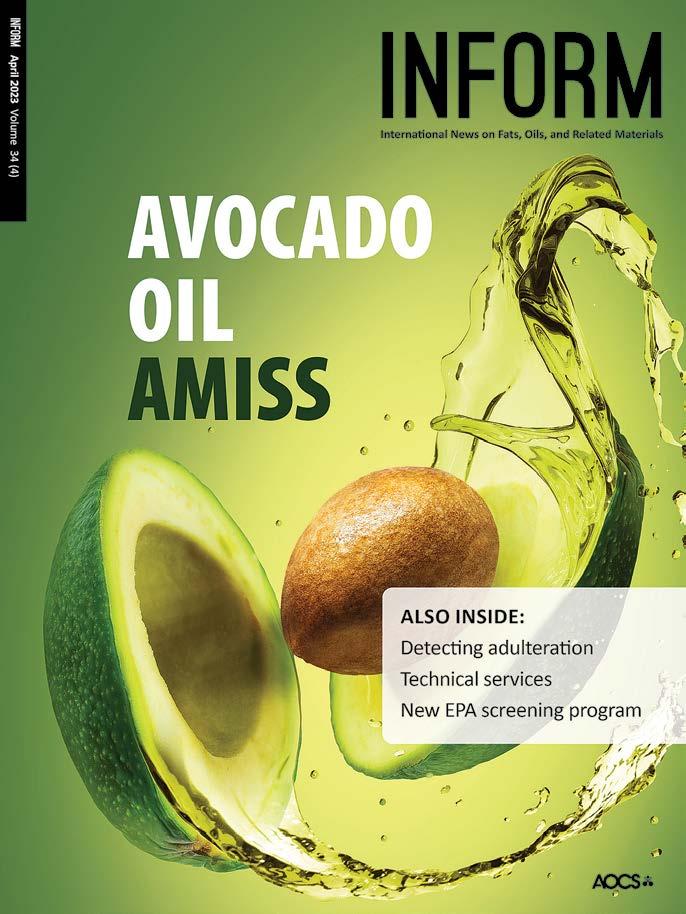
part of the Joint FAO/WHO Food Standards Programme and was established by FAO and WHO to protect consumer health and promote fair practices in food trade. It held its first meeting in 1963. The term "Codex Alimentarius" is Latin and means "food code.” Codex standards are international food texts, i.e., standards, codes of practice, codes of hygienic practice, guidelines, and other recommendations, established to protect the health of the consumers and to ensure fair practices in the food trade. The collection of food standards and related texts adopted by the Commission is known as the Codex Alimentarius
There are three major areas of regulations concerning the global trading of oils and fats. Firstly, there is the international arena such as that of the International Maritime Organization (IMO). Secondly,
there are the standard international contracts for trade such as the FOSFA (Federation of Oils, Seeds, and Fats Associations) contracts and NIOP (National Institute of Oilseed Products) trading rules, as well as regional or national legislations such as those of the European Union (EU). Finally, there are some international codes of practice that are becoming increasingly important, for example, the use of the principles of HACCP (Hazard Analysis Critical Control Points) and the Codex Alimentarius Code of Practice for Oils and Fats.
Traders must understand all these laws and rules, and they should be completely familiar with their contracts. Also, recall that most of the time, we are dealing with the food industry and that the copious amounts of oils and fats produced in the world are for human consumption.
Today, food production involves risk management and this risk must be managed at all stages of the food chain, from farm to fork. One of the most critical areas of risk is the transport of bulk cargoes of oils and fats by sea, from the producing countries to the consuming countries. The main reason the risk is high is that oils in transit are not under the direct control of any of the trading parties. For the duration of the voyage, they are the responsibility of a third party, that is, the shipowner. During this link in the food chain, a vessel carrying edible oil must comply with the legislation developed by the IMO.

This article is based on a presentation from John Hancock to the Oils & Fats International Congress held in Kuala Lumpur, Malaysia, in October 2010. John Hancock is the technical manager of FOSFA International, based in London. He has represented and promoted the interests of the oils and fats trade in many national, regional, and international technical arenas.
An estimated 85% of the current world trade in oils and fats uses FOSFA contracts, and it is interesting to consider the reasons for this. The main advantage is that the use of standard form contracts reduces the risk of trading parties misunderstanding the procedures they need to follow to enable the trade to go smoothly. The contracts also reduce the risk in trade as the clauses in the contracts are well known by all parties and reflect long-standing trade practices. This allows the parties to discuss and agree on the notable features such as quality, quantity, price, and shipment/delivery dates. Their confirmation letters include these details and usually a statement saying, "All other terms as per FOSFA 80" (for crude palm oil, by way of an example). This means that they do not have to read all the other parties' contracts, which would be necessary if standard contract forms were not available or used. All trading parties would like the contracts to be in their own language and refer to their own national legislation, but this is not practical. Thus, the trade agrees to use one
common language and one authority, and, by virtue of history, these happen to be English and the rule of English law, as is common to all internationally traded commodities.
The contracts also reduce risk as they include rules for the hygienic carriage of oils and fats in bulk by sea. These rules are tried and evaluated and have been developed now over two decades and with much experience. For a FOSFA contract, these rules are contained in the publication referred to as "The Carriage of Oils and Fats." Of particular importance in these rules are the two lists of banned previous cargoes and acceptable previous cargoes.
Certain regions such as the EU and the United States (via NIOP acting as the US trade body) have already made this choice for the trader by virtue of their wish to protect the health of the consumer. EU legislation requires that all food products be carried in dedicated transport. However, FOSFA approached the European Commission (EC) on behalf of its members and persuaded the EU that dedicated shipping, initiated in 1995, was not in the interests of any country. The distances are large, and the freight is expensive, so ships returning with empty tanks are not economic. More recently, this has been supported by the need to minimize the carbon footprint of the whole transport chain. Thus, the EU adopted a similar list to the FOSFA list of acceptable previous cargoes, but the European Food Safety Authority (EFSA) did not agree with the inclusion of a few of the products on the list. They felt that data were insufficient to make a judgment and changed the FOSFA list slightly. But most of these cargoes are not carried in great volumes, and they could be removed from the FOSFA and NIOP Acceptable Lists without reducing the available ship space or the flexibility that charterers and owners seek. The recent decision by the EC to re-evaluate their acceptable list has meant that the decision to amend these trade lists has been postponed.
The CCFO is in the lengthy process of developing its acceptable list. It currently has a draft list at Step 7 and a smaller proposed draft list at Step 3. These steps relate to the progress of the standards as they move toward general acceptance, from Step 1 to Step 8. Thus, a major part of the acceptable list is in an agreed draft form. There have been no health issues with any of the substances in the draft list at Step 7, which is effectively equivalent to the FOSFA list as it was in 1996 when the EU adopted it. However, the proposed draft list at Step 3 is more contentious. CCFO has developed a set of draft criteria that it feels could be used to assess the suitability of a substance being regarded as an acceptable previous cargo.
Briefly, these criteria state that an oil is to be carried in appropriate containers with cleaning, inspection, and recording systems. The previous cargo must have a minimum Acceptable Daily Intake (ADI) of 0.1 mg/kg of body weight/day, it must not contain a known food allergen that is not removed by further processing, and any known reaction products with oils must also comply with these criteria. However, these criteria are deemed extremely cautious. As
representing the industry, FOSFA supports these criteria but feels that the further processing of the oils at their destination should be considered, thus allowing a lower ADI to be allowed in this case. There is also the problem of assessing materials that do not have an ADI value. Nevertheless, we believe that overall, the criteria have a 10× safety margin built into them, but they are the only set of criteria that have a defined level of toxicity for previous cargoes. The criteria have been discussed by the EFSA, which concluded that they do not contradict the criteria used by the EU to consider previous cargoes. Thus, the hope is that these amended criteria will be agreed at the next meeting of the CCFO in February 2011 and allow the acceptable list to be adopted. There will be opposition to this adoption from the US delegation as they are against Codex having any lists, believing that the trade lists are adequate. However, this would leave the industry with at least three major lists of acceptable previous cargoes, namely, FOSFA, EU, and NIOP. Harmonization of the lists is a praiseworthy goal as this would prevent any potential of costly errors being made in the allocation of tank space. But this should not be pursued if it were to reduce the ship tank space available to the trade.
Next step: –implement the new standard for Codex using the analyses and specifications by Professors Wang and Wong (NZ). Then it’s up to the trade to lobby the retailers to ensure they get their suppliers to adhere to the Codex specification
Additional meetings on this topic
The Codex Alimentarius Commission (CAC) 45th meeting was held November 21 to December 13, 2022, during which the draft revision to the Standard for Named Vegetable Oils (CXS 210-1999) for inclusion of Avocado Oil was adopted at Step 5, noting that there are pending technical comments that should be submitted at Step 6. The CAC committee endorsed the extension of the deadline for completion of the work to CCFO28.
AOCS 5th Avocado Oil Expert Panel Meeting at the AOCS conference in Denver 30 May, 2023.
The meeting will be chaired by Selina Wang (scwang@ucdavis.edu)
Its purpose is to discuss areas of interest regarding Avocado oil. A further meeting in the first quarter of 2024 will be given an update by Jill Moser. She will provide a summary of the data that has been collected. USP has submitted a standard and it was published by the FCC and was effective on June 1, 2022. Current published Monograph is for refined avocado oil. Monographs are updated in June and December each year. Requests for a monograph for virgin/ extra virgin oil would require more data. USP has updated the format of the Avocado Oil standard by deleting some tests and replacing them with the relevant reference tests in FCC Appendix VII. But there is no content change to these tests.
A transdisciplinary and computational approach in food flavour creations using meat co-product as an exemplar
Authors: Santanu Deb-Choudhury1, Munir Shah2 and Carolina Realini1
Affiliation 1: AgResearch Limited Affiliation 2: Waka Kotahi NZ Transport Agency
Introduction
Most meat co-products have traditionally generated little economic value, with some even having a negative value due to their disposal costs, representing a significant waste. From a sustainability perspective, it is important to reduce this waste and create more value from meat co-products, especially targeting the food industry. Many of these meat co-products contain an appreciable amount of nutrients like essential amino acids, minerals and vitamins, and could be developed into higher value ingredients for a range of industries including food service. They can also be considered as raw materials for the generation of bioactives [1] and to produce extracts with excellent functional properties suited for a wide variety of food industry applications.
Novel approaches to flavour development create opportunities to develop new applications from co-products. The creation of unique flavour profiles to satisfy consumers’ continuing craving for novelty and their growing interest in flavour pairing is a major challenge for food companies. Chefs also must master the ability to develop flavours that create balance and harmony in the final product and create a complex multi-sensory experience in consumers. Traditional approaches to flavour development, whereby development chefs attempt to create new sensory experiences through applying previous experience, trial-and-error, and panel tasting, will not be able to identify the full opportunity-set of flavour combinations. This is because there are many possible combinations and interactions between the numerous chemical compounds of ingredients that largely determine how consumers experience flavour. To be able to identify and exploit this opportunity-set of possible flavour combinations more rapidly and comprehensively, traditional approaches to new flavour development need to be complemented with science-based computational approaches that are better equipped to systematically explore a large range of possible combinations of chemical compounds.
In recent years, there has been a significant increase in understanding of food flavour from knowledge developed by the traditional fields of physics and chemistry [2], sensory [3], psychology and neuroscience [4], and more recently, by the emerging fields of molecular [5] and computational gastronomy [6]. On one hand, volatile and non-
volatile chemical compounds may directly or indirectly contribute to taste and odour profiles and hence greatly influence food flavour. Volatile compounds in food make up the characteristic aromas and contribute to their flavour. These are chemicals which are easily given off in the form of a gas and affect our olfactory senses. Non-volatile compounds, such as peptides, free amino acids, nucleotides, organic acids, soluble sugars, polyols, or carbohydrates, interact with our taste buds in our tongue. Published cooking recipes are a great starting point for identifying successful ingredient combinations. Thus. with an instrumental analytical approach, combined with information from recipes, followed by a computational methodology that analyses chemical compatibilities and frequencies of combinations from recipes, unique ingredient pairing outputs can be identified that would not be achieved by chefs alone.
Computational methods can assist in further flavour creation process in three main ways:
1. Making historical knowledge about culinary practices more accessible to flavour scientists and chefs by modelling data from countless published recipes so that they are easily searchable and comparable.
2. Helping to develop unique flavour ideas that are relatively free of human biases about which ingredients mix well and which do not by uncovering ingredient relationships using chemical signatures.
3. Reducing the time and cost associated with the flavour creation process, by proposing novel and plausible food pairing ideas for further creation and validation.
Modernist cuisine takes the approach of novel combinations of ingredients and preparation methods and is more open to scientific methodologies [7]. This approach is highly dependent on the chef’s experience in ingredient manipulation and processing. However, the flavour of food is quite complex, requiring chemical, instrumental and sensory techniques and/or sophisticated modelling and equipment to create a complete description. A traditional scientific approach to sensory analysis uses classical experimental designs and statistical analysis, such as linear multivariate analysis. However, computer algorithm-based methods such as non-linear regression and artificial intelligence may be used in conjunction with more traditional methods to optimise and overcome potential shortfalls in existing approaches. We envisioned a New Zealand platform where machine learning algorithms support chefs to easily identify complementarity or contrasting flavours that would form the backbone of creative dishes.
Culinary expertise and flavour-matching algorithms in conjunction with advanced analytics were used for the discovery of new flavour combinations. Both conventional and novel ingredients, including New Zealand edible native plants, were paired by the algorithm to create unique flavour combinations for an in-restaurant consumer tasting experience.
The chefs accessed the flavour-matching algorithm and started by choosing one ingredient. Subsequently, the system, using the flavour profiles of analysed ingredients, then suggested 10 further options to pair with the starting ingredient. The chefs continued this ingredient selection process until a new dish was conceived. Two such dishes were tasted by diners at a restaurant
To be able to successfully link and combine different methods and integrate knowledge from both science and non-science disciplines, a transdisciplinary approach is needed. We have followed such an approach to create value addition for meat co-products that have traditionally been viewed as waste. In this approach, we combined traditional food knowledge and food preparation methods with advanced analytics and flavour-matching algorithms to develop new food formats with intense and desirable flavours from meat co-product streams. Algorithms, based on genetic algorithms and generative adversarial networks, were developed to sift through this database and model relationships among ingredients. Based on this information, recipes and chemical features, the algorithms recommend new combinations of ingredients paired with the given group of starting ingredients and target flavour.
Our approach has several advantages over traditional approaches to innovation in the food flavour development space, including:
1. It drastically reduces the time and cost associated with developing
in Wellington: a dish using a more conventional pairing of beef, orange, ginger and potatoes, pictured left, and a unique combination of boiled chicken, camembert, passionfruit, cocoa and Kawakawa (Macropiper excelsum) endemic to New Zealand. Diners commented that they loved that the chicken dish was “challenging in terms of ingredients” and that they “were quite excited by that”. They felt that using the flavour-matching algorithm to enhance and embellish the food industry was a positive step forward. The chef remarked, “Looking at how these products work together is definitely the beginning of a new cuisine. I’m looking forward to using this approach further.”


new flavours by using advanced computational processes to rapidly search, compare, and match ingredients based on recipes and the ingredients’ chemical signatures.
2. It helps to uncover unexpected relationships (e.g., similarities) between ingredients, thereby enabling food scientists and development chefs to find novel uses for ingredients.
The suggested ingredients and flavours are then validated by development chefs and consumers. Our approach is novel in that heuristic evaluations are made to customise flavour to create unique eating experiences.
In further work, we aim to use this platform to help address broader opportunities in our food systems. The application of this platform is not limited to just one product of one industry sector, but to all food applications. For example, the platform can be used:
• To create new flavours, potentially replacing artificial flavourings.
• To enhance flavours for the elderly population experiencing reduced taste-sensation, thereby increasing their enjoyment of
food and encouraging a higher food intake and better health.
• To provide more ‘natural’ flavours for alternative protein products, which are gaining momentum with consumers, using native ingredients and turning them into unique New Zealand flavours.
• To create a digital recipe platform for the service industry to create food that is not only tasty but also meets nutritional requirements.

This research was funded by the Strategic Science Investment Fund (SSIF; AgResearch Ltd.) - A27235, Consumer Experience: pathways to premium foods.
1. Martínez-Alvarez, O., S. Chamorro, and A. Brenes, Protein hydrolysates from animal processing by-products as a source of bioactive molecules with interest in animal feeding: A review. Food Research International, 2015. 73: p. 204-212.
2. Vega, C. and J. Ubbink, Molecular gastronomy : a food fad or science supporting innovative cuisine? Trends in Food Science and Technology, 2008. 19: p. 372-382.
3. Novel Techniques in Sensory Characterization and Consumer Profiling. 2016: CRC Press.
4. Spence, C. and M.U. Shankar, The influence of auditory cues on the perception of, and responses to, food and drink. Journal of Sensory Studies, 2010. 25(3): p. 406-430.
5. Spence, C. and J. Youssef, Assessing the long-term impact of the molecular gastronomy movement on haute cuisine. International Journal of Gastronomy and Food Science, 2018. 14: p. 35-44.
6. Spence, C., Food and beverage flavour pairing: A critical review of the literature. Food Res Int, 2020. 133: p. 109124.
7. Linden, E., D. McClements, and J. Ubbink, Molecular Gastronomy: A Food Fad or an Interface for Science-based Cooking? Food Biophysics, 2008. 3: p. 246-254.
Early April saw the 10th World Avocado Congress at the AOTEA centre in Auckland. This was the first time the event has been held in New Zealand. This report covers the discussions on Avocado oil quality
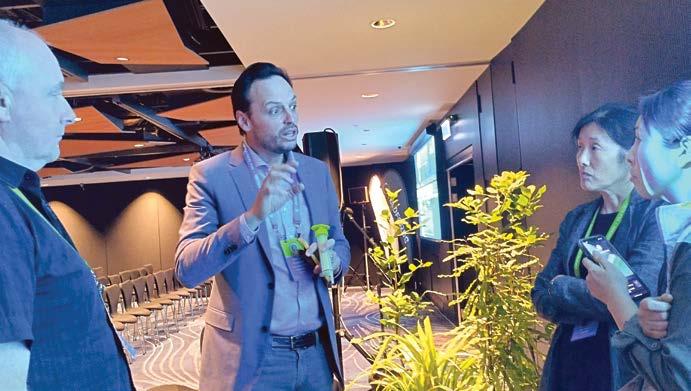

Industry leaders from around the world met to discuss the latest in agricultural technology, business, and nutrition. Total attendance was 1160 people.
Coming out of a turbulent few years, speakers and attendees were eager to talk about what the future held.
International Fresh Produce Association Chief Executive, Cathy Burns, said that despite the challenges of the pandemic, things were looking up.
“What makes this event so special is the opportunity for people to get together to talk about solutions to those challenges," she said. While the industry was facing headwinds, Burns said there had never been such focus on health and nutrition as there was at the conference. With an increase in the world market, she said a small grower like New Zealand was primed for success. "The sky is the limit, quite frankly," she said.
The three-day event was attended by delegates from thirty-three countries. Around the Congress there was lots of excited chatter in many languages, quite an experience. The Congress venue at times appeared overwhelmed by the numbers and the organisers appeared to be struggling with the catering of morning tea and lunchtime with queues clogging the areas. However, the coffee supplied free was delicious and for those that yearn for the traditional sausage rolls, they also were delicious.
This reviewer was particularly interested in the section on avocado oil. This has recently been the subject of a lot of controversy. Our friend and professional colleague professor Selina Wang attended from UC Davis CA. Alan Woolf from Plant and Food Research had organised an afternoon session discussing aspects of oil. Whilst a minor interest for most delegates, oil is a hot topic amongst those who produce it, research it, and trade in it. Whilst virgin avocado oil is a brilliant green and is easy to recognise, refined and deodorised avocado oil is pale yellow and looks like every other vegetable oil on the shelf. So,
unless the oil is fully analysed it is hard to see whether the oil being sold is fraudulent or has some avocado oil in a blend.
Additionally, there is currently no existing codex standard for unrefined or extra virgin avocado oil although one for refined bleached deodorised oil has just been released. This is a frustrating problem for the genuine processors in New Zealand who are trying to ship to export markets. What is happening, particularly in the United States of America, is that the cheaper, fraudulent oils are ruining the market for high quality virgin and genuinely processed oils. This is a similar situation to that which exists for olive oil and a problem which many countries have been battling for 40 to 50 years. In Australia, the problem was partially alleviated by Australia having its own standard which had been worked on by experts in the field for a couple of years and then the supermarkets being convinced to insist on authentication evidence before accepting product into their supermarket shelves.
The Consumer Protection Act (Act 68 of 2008) states that consumers
The New Zealand avocado industry is vibrant, diverse, and innovative. The industry is seeing considerable growth and has an ambitious strategy to grow to $1Billion by 2040 by pursuing exciting opportunities in both export and New Zealand markets, supported by innovation and collaboration with stakeholders including the Crown and Crown Research Institutes.
New Zealand currently produces just 2% of the global supply but is the ninth largest international avocado exporter. There are nearly 5,000 hectares of avocado trees planted in New Zealand, primarily in the Bay of Plenty and Northland
Avocados grow in the North Island of New Zealand which offer a mild climate, plenty of rain and fertile soils. New Zealand is also hilly, and the coastal environment is often windy. The industry has 800 growers who produce mainly the Hass variety of avocados. Several packhouses, fruit marketing companies and exporters are involved in the industry to market and sell New Zealand avocados both in New Zealand and overseas.
Avocado growers in New Zealand register with NZ Avocado and comply with strict rules around avocado quality, food safety and sustainability.
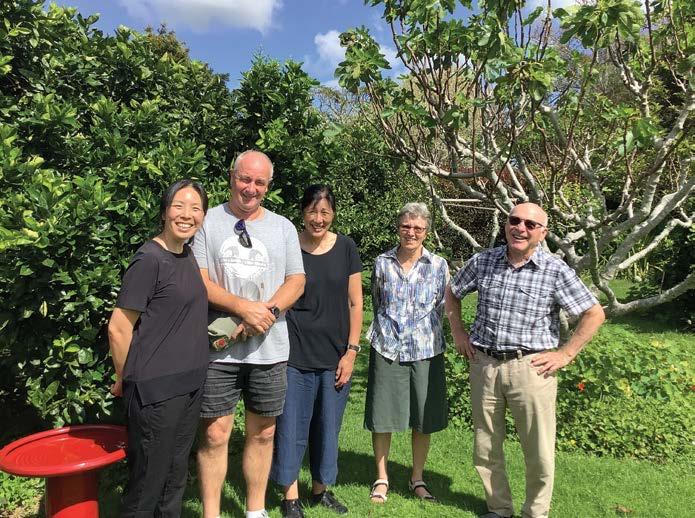
These rules apply right through the supply chain to ensure that our avocados are harvested only when ready and nurtured along their whole journey, so that when they arrive on your plate, you can enjoy their creamy deliciousness.
have a right to high-quality products that are not falsely marketed or misrepresented. In 2017, the CODEX Committee on Fats and Oils (CCFO), an international organisation that develops worldwide standards, codes of practice, and guidelines for fats and oils of animal, vegetable and marine origin, began the process of standardising the definition of avocado oil (https://tinyurl.com/mu3j7u77). This change is necessary because a recent study shows that much of the avocado oil currently on the market is not from the pulpy, green fruit. In 2020, Wang led a team of researchers at UC Davis on the first large-scale examination of commercially available avocado oil. The study consisted of 22 samples obtained from six stores and two online outlets (https://doi.org/10.1016/j.foodcont.2020.107328). They compared the samples to the proposed standards from CODEX and researchers in New Zealand to evaluate quality and purity. Their results set off a ripple across the industry.
The team found that the majority (82%) of the avocado oil in the study was stale or adulterated with other vegetable oils. Of the 22 samples collected, 15 were oxidised, which robs the oil of its flavour and health benefits. Some bottles labelled ‘pure’ or ‘extra virgin’ avocado oil were in fact mixtures of the less expensive, yet healthful, soybean, safflower, and sunflower oils.
These findings illustrate the need for standards to protect consumers and the growing industry from fraudulent products. Most producers can agree that standards are essential, but how to draw those standards is the looming question.
"Based on our ten years of experience working on olive oil, a fair standard would be important for the avocado industry so it can continue to grow," Wang said. "Working with the industry, we can establish standards and make sure customers are getting high-

quality, authentic avocado oil and the companies are competing on a level playing field."
Wang and her team began the process of evaluating the proposed CODEX purity standards for avocado oil in a paper published in January (https://doi.org/10.1016/j.foodcont.2022.109277). She included data obtained from five avocado growing regions to evaluate the natural range of chemical compounds in avocado oil. The fatty acids in avocado oil include saturated fatty acids (palmitic (16:0) and stearic acids (18:0)), monounsaturated fatty acids (palmitoleic (16:1) and oleic acids (18:1)), and polyunsaturated fatty acids (linolenic (18:2) and linoleic acids (18:3)). Triglycerides increase as the fruit matures. To find the right range for each fatty acid in avocado oil to differentiate it from high oleic oils, the team focused on the sum of oleic acid (C18:1 (n-9)) and its isomer (C18:1 (n-7)) (https://doi. org/10.1016/j.focha.2022.100107). Existing analytical methods can quickly determine the concentration of these fatty acids in a sample.
The data from Wang’s lab show the concentration of the oleic acid isomer is commonly between 5.5 and 7 for avocado oil. This concentration falls below 4 for other high oleic oils, like safflower, sunflower, canola, and soybean oil. Comparing the ratio of oleic acid to its isomer (n-9/n-7), pure avocado oil produces values between 5.7 and 13, vegetable oils are closer to 100. To help characterise levels of adulteration, Wang suggests setting the proposed acceptable n-9/n-7 range to between 6 and 11.5 for avocado oil to ensure 75% of the sample is pure. This range may change slightly with more authentic samples from other regions to accommodate natural variances.
In addition to the fatty acid profile, Wang and her team examined two other chemical compounds to fingerprint avocado oil. The analytical technique to identify sterols, a type of lipid that helps maintain the plant’s cell membrane, is complex but provides valuable information to identify adulteration. Stigmasterol is practically nonexistent in pure avocado oil, but it is a common sterol in adulterating vegetable oils. Conversely, clerosterol and beta sitosterol occur at low concentrations in other vegetable oils but are enriched in avocado oil (clerosterol ~ 1.47 to 3.49% of total sterols and beta sitosterol ~ 81.71–85.87% of total sterols).
Tocopherols, which are antioxidants naturally occurring in avocado oil, provide an additional path to verify avocado oil purity. The draft CCFO avocado oil standard proposed a range from 50 to 450 mg/ kg for alpha tocopherol, 10 to 20 mg/kg for gamma tocopherol, and non-detectable to 10 mg/kg for delta tocopherol. Wang’s team found oil pressed directly from the fleshy, green fruit fell below 200 mg/ kg for alpha tocopherol and were non-detectable for the remaining tocopherol varieties. For oil pressed from the whole fruit, the values obtained were close to the top values proposed by CCFO. Past studies on olive oil suggest that the process of refining an oil can remove tocopherols from the composition. This factor, along with how the fruit was pressed can affect the overall concentration of tocopherols, which may require additional scrutiny when developing a tocopherol range for defining avocado oil purity.
Many countries are in the avocado oil market, including Mexico, South Africa, Kenya, Brazil, Peru, New Zealand, and the United
States. Most oil sold in the USA is refined or processed with heat or chemicals to remove flaws. Other countries, like New Zealand, only sell virgin or extra virgin oils, which are pressed from healthy fruit without heat or solvent.
While virgin and extra virgin oils contain a higher concentration of antioxidants that boost the health benefits (https://doi.org/10.1016/j. afres.2022.100190), the draft standard for avocado oil is only being defined for the refined variety. Establishing a separate standard for virgin and extra virgin avocado oil is currently an issue under discussion. This is with Codex and the NZ Avocado team of Woolf, Wong, Eyres and Wang. (Sounds like a rock group.)
It is safe to say that with no standard in place, purchasing a bottle of avocado oil at the supermarket has turned into a game of roulette. For this reason, Wang has a few tips that consumers can follow as they browse the store shelves.
She recommends that consumers check the date of harvest on the bottle’s label to ensure maximum freshness. If the harvest date is not available, Wang suggests selecting an oil that has the longest time before the ‘best before’ date. Remember, all oil, regardless of quality, will oxidise over time. During rancidification, avocado oil takes on an odour like Play-Doh™. To preserve the oil, purchase a bottle that will be finished by the ‘best before’ date and store the bottle away from light and heat. In other words, do not keep your oil next to the stove top. Wang also suggests buying avocado oil packaged in dark glass rather than clear plastic to reduce the impact from oxidation.
"We need quality criteria to differentiate virgin, refined and crude avocado oil," says Wang. "But to eliminate adulterations, we need purity criteria such as fatty acids and sterols composition which is very similar among different types of avocado oil."
The standards are not codified and are meant to be revised and updated when changes occur. The CCFO agreed to approve the draft revision to include avocado oil at the meeting in 2021, and forwarded it to the CODEX Alimentarius Commission, which accepted the new draft standard except for several provisions that the committee continues to work through. The CCFO is currently collecting more data to update those provisions, which will be further evaluated for their inclusion in the revision at the next meeting in 2023.
According to Wang, the avocado industry could address the purity question by taking a page from their olive oil counterparts and begin the process of developing practices for self-regulation. This optin unity can regain and maintain the trust of their customer base.

Through self-regulation, the avocado oil producers can agree on certain verifiable characteristics and third-party testing can be used to ensure purity and quality of their product while the world awaits the final CCFO standard. A certified seal on an avocado oil’s label would confirm third-party verification and amplify consumer confidence.

"Let’s make sure avocado oil is made from avocados," Wang says. "Honest producers want their customers to know they care about quality and authenticity, and they have a brand that they can trust."
Wang and her team will continue to develop the techniques and refine the limits in the standards that validate the quality and purity of avocado oil, but she stresses the need for more research to understand how fruit characteristics, such as cultivar, harvest time, and post-harvest processing affect oil yield, chemical composition, and shelf-life for oil produced around the world. Wang also welcomes suggestions from and collaborations with oil chemists, especially when it comes to developing rapid and reliable techniques to check for adulteration.
Interestingly enough an article on Professor Wang’s studies and the whole issue of Avocado oil adulteration appeared in Inform a week after the conference concluded. (See Oils and Fats Column, pg 14)
Green, H. S.; Wang, S. C. Food Control 2023, 143, 109277 “Evaluation of proposed CODEX purity standards for avocado oil”
Green, H. S.; Wang, S. C. Food Chemistry Advances 2022, 1, 100107 “Cis-vaccenic acid: New marker to detect seed oil adulteration in avocado oil” ii Green, H. S.; Wang, S. C. Applied Food Research 2022, 2(2), 100190 “Extra virgin grade avocado oil can be achieved using whole fruits or only mesocarp
The Codex Committee on Fats and Oils (CCFO), an international organisation that sets standards for oils and fats, began the process of determining a standard for avocado oil in 2017 but currently the draft is for refined avocado oil.
A team of researchers in California found that avocado oil can be differentiated from other high oleic vegetable oils using the profile of specific fatty acids ((C18:1 (n-7) and C18:1 (n-9)) and sterols (stigmasterol, clerosterol, and beta sitosterol). Without an internationally defined standard, consumers are left vulnerable to adulterated or fraudulent avocado oil in the marketplace.
The CCFO defines a standard by finding a range of chemical and physical characteristics – like the amount of fatty acids, sterols, and tocopherols – to establish parameters for authentic oil from the avocados collected from member countries interested in participating. According to Wang, it will be difficult to establish a standard for avocado oil without a representative sampling of fruit from across the growing regions of the world. She worries that no matter how well thought out and meaningful, without a proper representation of samples, any established standard could be excluding authentic avocado oil.
There was much discussion around this topic and hope was pinned on getting key bodies such as the Californian Hass Board involved.
Winners for the 2023 round of the annual Australasian Packaging Innovation & Design (PIDA) Awards have recently been announced in front of 330 people at a gala awards evening at the Crown Promenade in Melbourne, Australia.
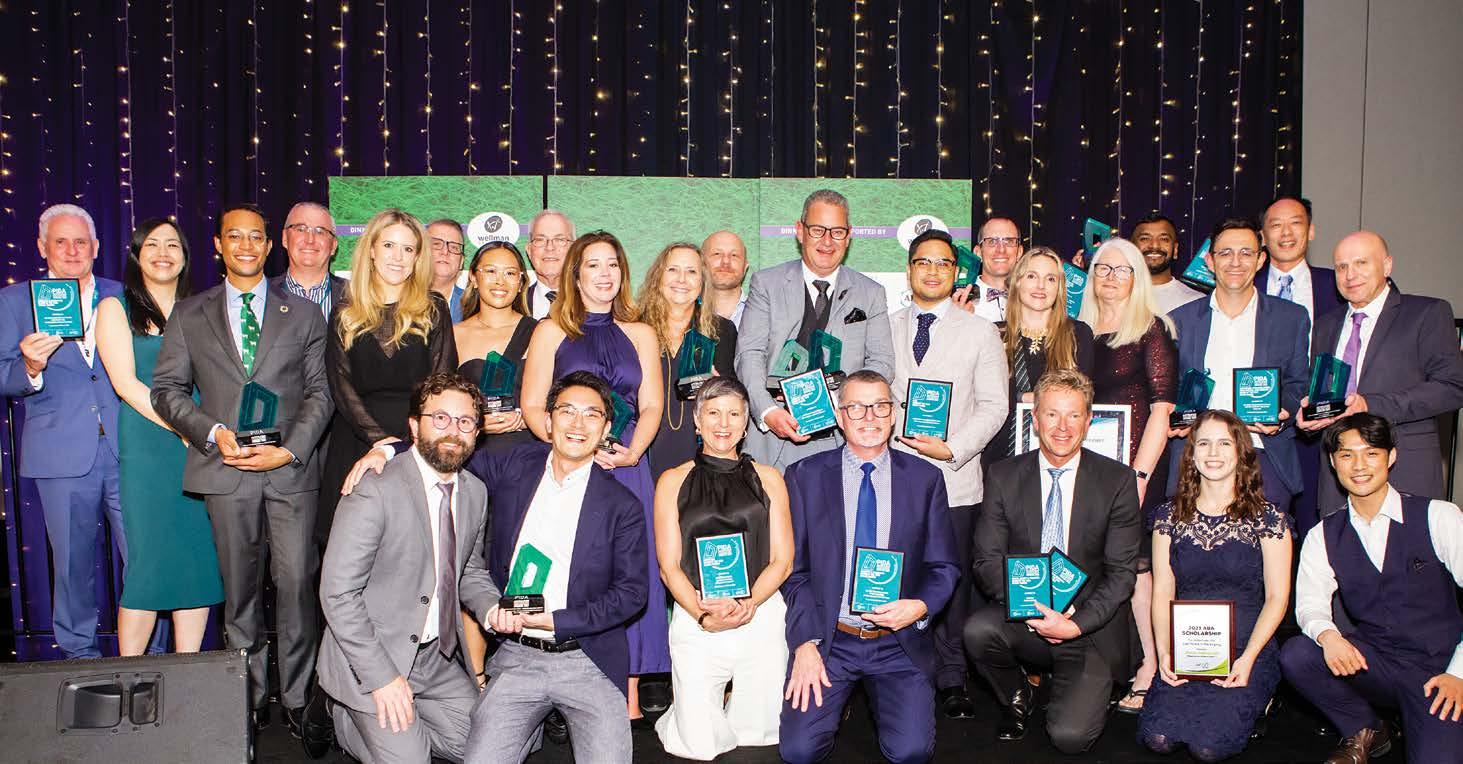
Coordinated by the Australian Institute of Packaging (AIP) the PIDA awards are designed to recognise companies and individuals who are making a significant difference in their field across Australia and New Zealand.

The Packaging Innovation & Design of the Year company awards recognise organisations that have designed innovative packaging within six categories:
1. Food Packaging Design of the Year
2. Beverage Packaging Design of the Year
3. Health, Beauty & Wellness Packaging Design of the Year
4. Domestic & Household Packaging Design of the Year
5. Labelling & Decoration Design of the Year
6. Outside of the Box Design of the Year
There are four special awards also available:
1. Marketing Design of the Year
2. Sustainable Packaging Design of the Year
3. Industry Packaging Professional of the Year
4. Young Packaging Professional of the Year
5. ABA Scholarships
The PIDA Awards are also the exclusive feeder programme for Australia and New Zealand for the prestigious WorldStar Packaging Awards run by the World Packaging Organisation. All 2023 PIDA winners will be automatically eligible for entry into the 2024 WorldStar Packaging Awards competition.
The Food Packaging Design of the Year award recognises organisations that have designed innovative packaging and/or materials, within food packaging and processing including fresh, frozen or other.
Gold winner was JBS Swift Lamb Cutlets CRYOVAC Darfesh MonoPET rollstock (Sealed Air)
Silver winner was EarthPouch High Barrier Quad Seal (Mikro Coffee Roasters & TCL Hofmann).
Bronze winner was Vitor Grapes ‘hippie punnet’ – (NAVI Co Global). There were two High Commendation awards: Australian Organic
Food Co. Minestrone Soup mono material retort pouch (Flavour Makers & Toppan Inc) and DualPakECO compostable food trays (Confoil & BASF).
The Beverage Packaging Design of the Year award recognises organisations that have designed innovative packaging and/or materials, within packaging and processing for liquid or dry tea, coffee, water and soft drinks including wine, beer and spirits.
Gold winner was Banrock Station Eco Bottle (Accolade Wines)
Silver winner was Penley Sustainability Range (Cutler Brands).
Bronze winner was Wine Protector (Planet Protector Packaging).
The Health, Beauty & Wellness Packaging Design of the Year award recognises organisations that have designed innovative packaging and/or materials, within cosmetics, toiletries, personal hygiene, supplements, vitamins, perfumes, hair body and oral care. This award also covers packaging of all medicines including over the counter medicines, medical equipment packaging.
Gold winner was KOi refillable foaming handwash starter kit and 4 pack refillable handwash tablets (Coles Group)
Silver winner was Habitat Shipper Box (Production Packaging Innovations)
Bronze winner was BioShield Caps & Closures)
The Domestic & Household Packaging Design of the Year award recognises organisations that have designed innovative packaging and/or materials, packaging within domestic and household items,
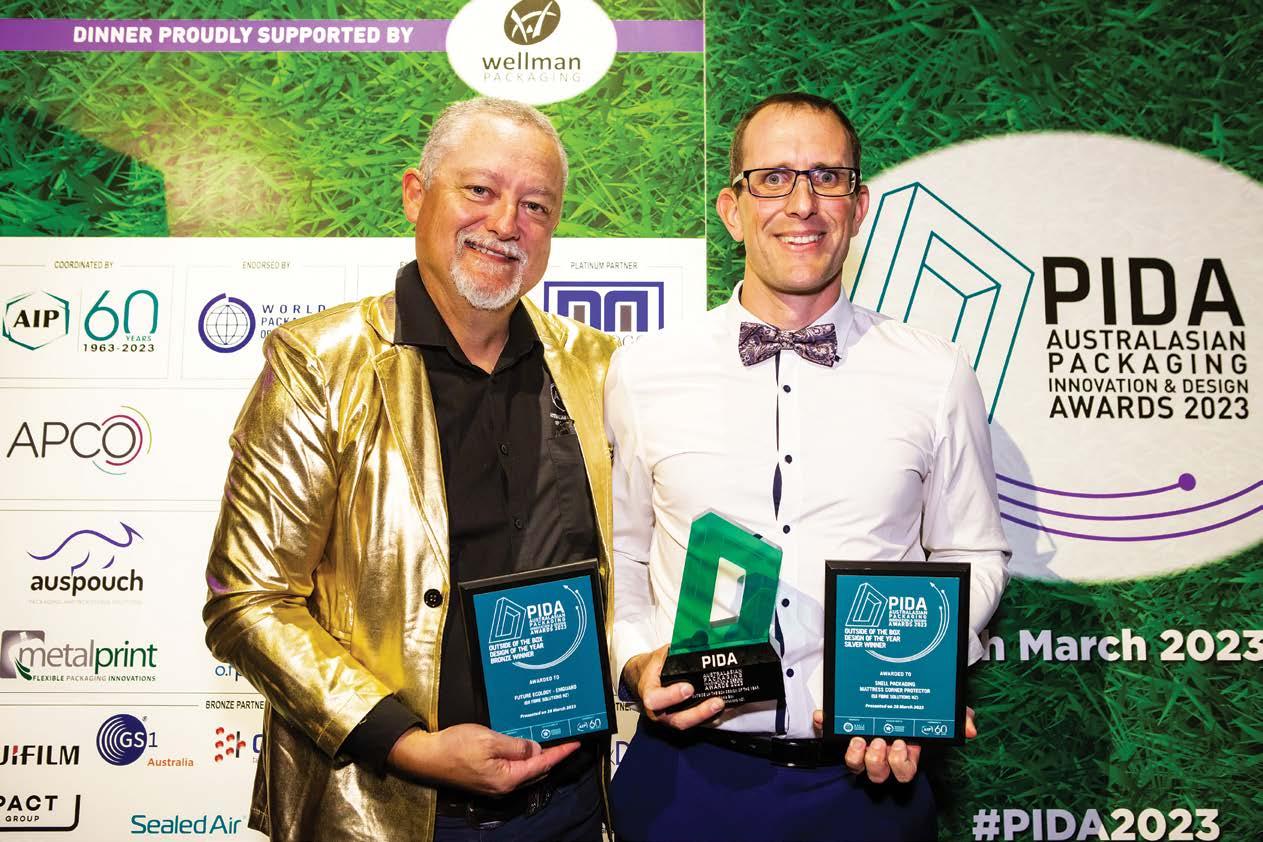
New Zealand companies scooped the pool in the Outside-ofthe-Box awards
toys, stationary, gifts, clothing, garden equipment, decorating.
Gold winner was 10:PM Mattress Box (Production Packaging Innovations - Karl Joyce, Anjelo Tsoutsoulis and Vaughan Taplin)
Silver winner was Easy Pour (DuluxGroup – British Paints)
Two Bronze winners - BioShield (Caps & Closures) and The Dirt Co Circular Refill Pouch Packaging (O F Packaging/Close the Loop Group)
The Labelling & Decoration Design of the Year award is designed to recognise the addition of content to a pack which creates a unique or innovative appearance, function or communication. This may include labels, sleeves, tags, coding/markings, etching, directly applied inks or by any other similar process.
Gold winner was Christmas BioCups (OzHarvest & BioPak)
Silver winner was Herma InNo Liner Labelling (Result Group & Hanes Australasia)
Bronze winner was The Good Smoothie Milk Powder Composite Pack (Nutura Organic & Zipform Packaging).
The Outside-of-the-Box Design of the Year Award has been established for miscellaneous packs and materials that are not included in any other category.
GOLD winner was Coola Box (Oji Fibre Solutions NZ)
Silver winner was Snell Packaging – Mattress Corner Protector (Oji Fibre Solutions NZ)
Bronze winner was Future Ecology – EmGuard (Oji Fibre Solutions NZ)
Packaging can elicit emotional responses in consumers and should be seen as your best form of marketing. The right packaging design and eye-catching aesthetics can create emotional stimuli that ensures a brand is purchased. The Marketing Design of the Year award considers not only primary packaging but also secondary and tertiary packaging designs.
Gold winner was Sustain OzHarvest Cups (Bunzl Australia and New Zealand)
Silver winner was Dulux Jellybean Promotion Pack (Dulux Australia)
Bronze winner was Keen’s Meal Bases (BrandOpus (Australia) & McCormick Foods Australia)
The Sustainable Packaging Design of the Year award is designed to recognise companies that have developed innovative packaging or processing solutions that incorporate sustainability considerations. Elements include social, material, source reduction, energy and recovery.
Due to the broad array of innovative and sustainable packaging designs in this category the judges have split up the winners into the following categories.
• Recycled Content
• Labelling
• Mono Material Advancements
• Renewable Materials
• Compostables
Recycled Content
Gold winner was Coles Finest Carbon Neutral Steak Vacuum Packaging (Coles Group & Plantic Technologies)
Silver winner was Banrock Station Eco Bottle (Accolade Wines).
Bronze winner was Dulux 50% rPP Paint and Lid (Pact Group & Dulux Group).
Labelling
Gold winner was Herma InNo Liner Labelling (Result Group & Hanes Australasia)
Silver winner was RafCycle by UPM Raflatac
Mono Material Advancements
Gold winner was Australian Organic Food Co. Minestrone Soup mono material retort pouch (Flavour Makers & Toppan Inc)
Silver winner was JBS Swift Lamb Cutlets CRYOVAC Darfesh MonoPET rollstock (Sealed Air)
Bronze winner was Store Operations Fruit & Vegetable PE film (Woolworths Group Ltd)
Renewable Materials
Gold winner was Wine Protector (Planet Protector Packaging)
Silver winner was Tempguard Gusset for HelloFresh (Sealed Air)
Bronze winner was Sustainable Fresh Produce Packaging (Detpak & Woolworths Supermarkets).
A High Commendation was awarded to Priestley’s Gourmet Delights Fibre tray insert (Opal).
Compostables
Gold winner was DualPakECO compostable food trays (Confoil & BASF)
Silver winner was Aqueous BioCups (BioPak)
The Industry Packaging Professional of the Year award is designed to recognise and acknowledge the outstanding achievements and contribution by an individual currently working within the Packaging industry in Australia and New Zealand. The judges look for individuals who have demonstrated vision and leadership, shows innovation and not afraid to take risks. This award is for significant and continued contribution of an Individual to the industry over a minimum period of 20 years.
The 2023 Industry Packaging Professional of the Year is Michael Dossor MAIP, Group General Manager, Result Group.
The purpose of the Young Packaging Professional of the Year Award is to provide incentive and recognition to young professionals who are both currently working in and wish to continue their career path within the Packaging industry in both Australia and New Zealand. This can be within any industries such as Food, Beverage, Health, Beauty & Wellness, Domestic & Household.
The 2023 Young Packaging Professional of the Year winner is Lars M. Ljung, Sustainability Manager, Planet Protector Packaging
The Australasian Bioplastics Association (ABA), in partnership with the Australian Institute of Packaging (AIP), is pleased to offer an annual Scholarship programme for Australia and New Zealand. The Scholarship programme will give one eligible candidate the opportunity to undertake a Diploma in Packaging Technology and a second person the opportunity to undertake a Certificate in Packaging.
The Certificate in Packaging Scholarship was awarded to to Jessica Ansell AAIP, Marketing Manager, Of Packaging & Close the Loop Group.
The Diploma in Packaging Technology scholarship was awarded to Tony Crowther AAIP, R&D Packaging Development Technologist, Lion Co.

Authors: Renyu Zhang, Carolina E.
Introduction
Realini & Mustafa M. FaroukDry-ageing of fresh meat is a natural processing strategy. It focuses on developing the signature, dry-aged meat flavour to satisfy growing consumer demands for exceptional eating experiences. Dry-aged meat is a niche product preferred by meat purveyors for its tenderness and unique flavours, such as intense nutty, roasted, earthy, buttery and umami flavours. Research focus on dry-ageing has significantly increased in the last 5-10 years as scientists and the meat industry aim to understand the key advantages of dry-ageing, and how dryageing can provide alternative merchandising opportunities for local and export markets.
Traditionally, dry-ageing is done by hanging primal or subprimal meat cuts, or placing them on shelves, in an ageing chamber (Figure 1). This allows critical elements of meat ageing to be controlled, including temperature, air velocity and relative humidity (RH). The typical process is to dry-age at refrigerator temperatures (0-4 °C), with effective air circulation and an intermediate RH (e.g. 70-85%), for a minimum of three weeks to develop the characteristic dry-aged meat flavour. Dry-ageing can also be seen as “ageing under drying
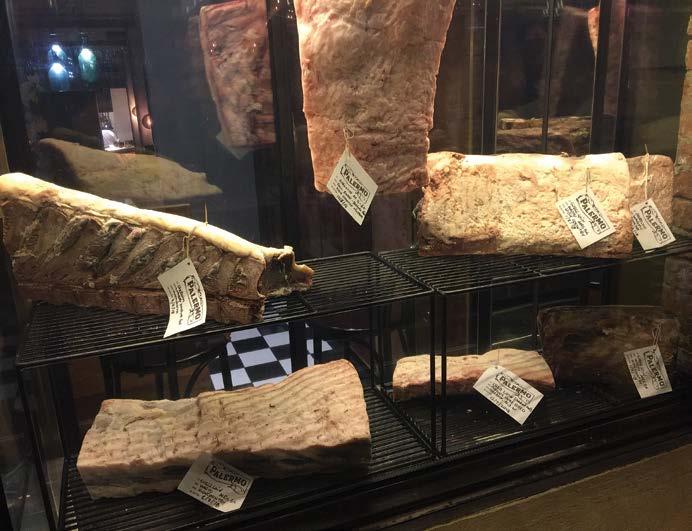
conditions”. A series of physical and biochemical reactions take place during the dry-ageing process, such as dehydration, oxidation, proteolysis, lipolysis and growth of microorganisms (Zhang, Yoo, Ross, & Farouk, 2022). These develop the unique quality of dry-aged meat.
Studying dry-ageing of red meat is one of the unique capabilities in AgResearch’s Food Processing and Technology team. Early career meat scientist, Dr Renyu Zhang, established the mechanisms for developing unique dry-aged meat flavour based on his Ph.D. research (Zhang et al., 2022). Renyu’s research priority is advancing knowledge of dry-ageing, while also developing viable strategies to support the meat and food service industries to produce dry-aged meat with more consistent quality, tailorable flavour and lower costs. This mini review provides an overview of recent dry-ageing research at AgResearch.
Traditionally, dry-ageing is done without any packaging or coverings on the meat. However, exposing meat to an ageing environment increases the risk of microbial contamination and inconsistent drying, which could result in spoilage and excessive weight or trim losses. Thus, the hygiene of meat and ageing rooms, and control of ageing conditions are the limiting factors for successful dry-ageing. To overcome these challenges, scientists developed an in-bag dryageing technique using a water- and oxygen-permeable ageing bag (e.g. TUBLIN® 10). Similar to vacuum packaging, the ageing bag requires a chamber vacuum sealer. It allows continuous and even dehydration while limiting oxygen and microorganism access to the meat (Li et al., 2022; Zhang, Yoo, & Farouk, 2019). In-bag dry-ageing of beef has been reported to increase product yield while reducing lipid oxidation, cook loss and microbial contamination without compromising sensory qualities (Li et al., 2014; Zhang et al., 2022). Trimming is unnecessary after in-bag dry-ageing, because of the low levels of microbial growth, so it increases product yield by 10-20%
(Zhang, Yoo, Realini, Staincliffe, & Farouk, 2021; Zhang et al., 2022). On the other hand, the dark brown, jerky-like trimmings/pellicles provide concentrated flavour molecules which contribute to the unique flavour of dry-aged meat. The pellicles should be considered a desirable characteristic, the signature of dry-ageing, rather than as waste, which help consumers to recognise dry-aged meat products. Further, in-bag dry-ageing can be done in a normal temperaturecontrolled room without the need for critical control of air velocity and RH, so it has the potential for easy uptake by meat processors.

New Zealand is one of the largest producers and exporters of beef and lamb. Grazing or grass-finished feeding systems in New Zealand produce leaner red meat products with lower intramuscular fat (IMF) content compared with those finished on grains in the feedlot system (Alfaia et al., 2009). Such a change in composition could alter meat quality and flavour (Frank et al., 2016). In addition, most of the beef produced in New Zealand is directly or indirectly derived from dairy herds, with similar percentages from beef and dairy animals and their crosses (Ministry for Primary Industries, 2022; Moot & Davison, 2021). Lean bull beef, for example, is mainly produced from dairy/beef crossbred cattle. This is regarded as lower-value beef, with 1-2% IMF content and lower meat quality (less juicy and tougher), than meat from standard beef cattle. As a result, it is usually used as manufacturing beef for processing into sausages, patties and other processed meat products but hardly used for premium products such as dry-aged beef. Meat scientists at AgResearch optimised value-added lean bull beef products by using the in-bag dry-ageing technique for local and export markets (Figure 2). Research results indicated that bull beef striploin could be in-bag dry-aged for 21 days to produce high quality dry-aged lean beef which is stable during frozen storage for 12 months (Zhang et al., 2019; Zhang, Yoo, & Farouk, 2021). Further, a new regime, called “stepwise in-bag dry-
ageing”, has also been developed by combining in-bag dry-ageing and wet-ageing as a stepwise process. This could produce dry-aged meat with similar quality to that produced from just in-bag dry-ageing, while also increasing the product yield by >10% (Zhang et al., 2019; Zhang et al., 2022).

Dry-aged products are commonly produced from beef, with very limited attempts to develop dry-aged lamb. One of the challenges is that the equivalent cuts used for producing dry-aged beef (e.g. striploin, cube roll and tenderloin) are too small in lamb to be profitably dry-aged for commercial purposes. The part of a lamb carcass viable for dry-ageing is the hindleg, known to consumers as lamb/leg chops in retail, and when cooked and served in restaurants. Dry-aged lamb products (whole leg or further processed into chops, Figure 3) have been developed by using the in-bag dry-ageing technique for 21 days with approx. 20% weight loss (Zhang, Yoo, Realini, et al., 2021). During focus groups, dry-aged lamb was perceived by consumers as tender, slightly dry, with a spongy texture; nutty, sweet with an aftertaste; or with a venison-like taste (gamey) and stronger lamb flavour, but without the mutton flavour, fatty taste or greasy aftertaste. Dry-aged lamb chops were equally preferred by
participants in a consumer (n=114) study compared with wet-aged lamb, which suggests a niche market for dry-aged products and great market potential for dry-aged lamb (Zhang, Yoo, Realini, et al., 2021).
Traditional dry-ageing is a costly process because it needs a long ageing time in a well-controlled ageing room with sufficient space between meat cuts to allow for air circulation and dehydration. These time and energy costs result in higher prices for dry-aged products. AgResearch has developed new strategies to accelerate the dryageing process by using the “stepwise in-bag dry-ageing” technique. The preliminary study has confirmed it is possible to develop dryaged meat flavour from well-aged lamb loins within 3-5 days, which is much faster than the traditional 21-day technique. This provides viable opportunities for the meat industry to produce dry-aged meat products at lower cost. The dehydration levels may be more precisely controlled and predicted (e.g. statistical modelling and non-invasive measurements) by using the novel processing strategy, thereby
producing dry-aged meat with more consistent quality as well as the ability to tailor the intensity of dry-aged meat flavours for consumer satisfaction (Figure 4). The preference for dry-aged meat by certain consumer segments suggests that it is a niche market, but this could be because consumers are more familiar with the flavour of wetaged meat as it is more widely available than the dry-aged product. Therefore, the processing, design and merchandising strategies for dry-aged meat should focus on improving its affordability and targeting those consumer segments which may prefer dry-aged meat.
To support the transition of the NZ meat export industry from volume to value, one strategy could be to develop iconic dry-aged meat products, with premium eating quality and unique flavours that can be tailored for consumer satisfaction. However, because of the significant cost of producing dry-aged meat using traditional techniques, and its niche nature, most dry-aged meat is still produced and consumed fresh in local markets, especially in highend restaurants, rather than frozen and exported. The market for exporting dry-aged meat has not been established. This work provides opportunities for the meat industry to reconsider the value proposition of export markets and obtain sustainable growth from value-added meat products. To achieve this goal, work with the meat industry is needed to better understand consumer preferences for dry-aged meat with different flavour intensities, to determine the shelf-life of chilled and frozen dry-aged meat, and market access requirements.
Over the last decade, meat scientists at AgResearch have developed considerable expertise in developing processing strategies to viably produce dry-aged beef and lamb for local and export markets. Strengthening the collaboration with meat industries can leverage this unique capability to iconise New Zealand meat products with tailored flavours for consumers across the globe.
References
Alfaia, C. P. M., Alves, S. P., Martins, S. I. V., Costa, A. S. H., Fontes, C. M. G. A., Lemos, J. P. C., . . . Prates, J. A. M. (2009). Effect of the feeding system on intramuscular fatty acids and conjugated linoleic acid isomers of beef cattle, with emphasis on their nutritional value and discriminatory ability. Food Chemistry, 114(3), 939-946. doi: https://doi.org/10.1016/j.foodchem.2008.10.041
Frank, D., Ball, A., Hughes, J., Krishnamurthy, R., Piyasiri, U., Stark, J., . . . Warner, R. (2016). Sensory and Flavour Chemistry Characteristics of Australian Beef: Influence of Intramuscular Fat, Feed, and Breed. Journal of Agricultural and Food Chemistry, 64(21), 4299-4311. doi: 10.1021/acs.jafc.6b00160
Li, X., Babol, J., Bredie, W. L. P., Nielsen, B., Tománková, J., & Lundström, K. (2014). A comparative study of beef quality after ageing longissimus muscle using a dry ageing bag, traditional dry ageing or vacuum package ageing. Meat Science, 97(4), 433-442. doi: http://dx.doi.org/10.1016/j.meatsci.2014.03.014

Li, X., Zhang, R., Hassan, M. M., Cheng, Z., Mills, J., Hou, C., . . . Hicks, T. M. (2022). Active packaging for the extended shelf-life of meat: Perspectives from consumption habits, market requirements and packaging practices in China and New Zealand. Foods, 11(18), 2903.
Ministry for Primary Industries. (2022). Livestock slaughter statistics for sheep, cattle, goats, horses, and pigs.
Moot, D. J., & Davison, R. (2021). Changes in New Zealand red meat production over the past 30 yr. Animal Frontiers, 11(4), 26-31. doi: 10.1093/af/vfab027
Zhang, R., Ross, A. B., Jacob, N., Agnew, M., Staincliffe, M., & Farouk, M. M. (2023). Rapid Evaporative Ionisation Mass Spectrometry fingerprinting can discriminate lamb meat due to different ageing methods and levels of dehydration. Journal of Proteomics, 272, 104771. doi: https://doi.org/10.1016/j.jprot.2022.104771
Zhang, R., Yoo, M. J., Realini, C. E., Staincliffe, M., & Farouk, M. M. (2021). In-bag dry- vs. wet-aged lamb: Quality, consumer acceptability, oxidative stability and in vitro digestibility. Foods, 10(1), 41.
Zhang, R., Yoo, M. J. Y., & Farouk, M. M. (2019). Quality and acceptability of fresh and long-term frozen in-bag dry-aged lean bull beef. Journal of Food Quality, 2019, 15. doi: 10.1155/2019/1975264
Zhang, R., Yoo, M. J. Y., & Farouk, M. M. (2021). Oxidative stability, proteolysis, and in vitro digestibility of fresh and long-term frozen stored in-bag dry-aged lean beef. Food Chemistry, 344, 128601. doi: https://doi.org/10.1016/j.foodchem.2020.128601
Zhang, R., Yoo, M. J. Y., Ross, A. B., & Farouk, M. M. (2022). Mechanisms and strategies to tailor dry-aged meat flavour. Trends in Food Science & Technology, 119, 400-411. doi: https://doi. org/10.1016/j.tifs.2021.12.023
This article has been written exclusively for Food NZ magazine by the NZ Food Safety Science & Research Centre (NZFSSRC)
Gale Brightwell is associate director of the NZ Food Safety Science & Research Centre and Principal Scientist at AgResearch


Aswathi Soni is an AgResearch Scientist, and will present her paper on Cold Plasma research at the NZFSSRC Symposium in July

UK-born Gale Brightwell is associate director of the NZ Food Safety Science & Research Centre (NZFSSRC or ‘the Centre’, for short), and Principal Scientist at AgResearch, based at the Hopkirk Research Institute, Massey University, Palmerston North. Gale and most of her team moved from AgResearch’s Ruakura centre in 2010. She and her partner – and a number of animals, including four alpacas – dwell on a couple of acres in the Pohangina Valley, where they live a life she says would not have been possible in the UK. There are no regrets at the move from Britain almost 20 years ago. On her AgResearch profile, she says: “We just kind of packed up our bags, sold the house, and went. I set up five job interviews for when I arrived and ended up getting offers on them all. I had the experience in molecular biology that everyone was looking for at the time.”
“I took the job at Ruakura in the food safety team as I could just see or sense that the team really needed someone to bring in some new ideas and new technology and was actually a really good place for me to fit where I could bring value.”
“It just felt right. I was in the (Hamilton) Botanical Gardens
Director of the NZFSSRC, Libby Harrison, is looking forward to the NZFSSRC Symposium in July
discussing this with my husband at the time, and it was a lovely warm day, and it was just a beautiful place, and I don't know, everything just felt right for that job . . .”
Time has proven her instincts right. Gale’s latest BIG food safety idea – they just keep on coming – is to apply cold plasma technology to meat products to extend shelf life and safety. Rather than killing all the natural micro-flora on the meat, treatment with cold plasma activated water (PAW) would knock them back to very low numbers, or in combination with chilling, slow down their growth, meaning it would take longer for the various types of bacteria in the natural microflora to reach levels where they can cause spoilage or market access issues.
This is important for New Zealand’s chilled lamb exports to the UK and the EU where slow and super slow steaming, and further delays at ports, mean it can take weeks for New Zealand products to reach their destination, resulting in reduction of shelf life in-market compared with meat produced in the local market. Slow steaming is a
process of deliberately reducing the speed of cargo ships to cut down fuel consumption and carbon emissions.
The potential use of cold plasma is not limited to the meat industry –it has much wider applications in the food, veterinary, and health industries, in fact anywhere microbial control is crucial.
For those unfamiliar with what cold plasma (CP) is and does, some background.
Naturally occurring plasma in space is a hot soup of ionised atoms, molecules, electrons and photons (particles of light) and is termed the fourth state of matter (solid, liquid, gas, plasma). Over 99% of the visible universe is, in fact, plasma. (Let’s not get side-lined into the mystery of dark matter.) What we are talking about here is plasma produced (by people here on Earth) at atmospheric pressure, and temperatures below 40 degrees Celsius. How? A low-energy electric charge is applied to gases like nitrogen, air, and argon to liberate electrons and thus create positively charged ions. The gas of choice flows between two electrodes which have a high potential difference. This means that electrons want to flow from the negative to the positive end, and as they do, they collide with the gas molecules flowing past, ionising them in the process. Depending on the gas, it then becomes a mixture of free radicals, ultraviolet frequency photons, positively charged ions, and independently moving electrons: cold plasma. The various reactive species are unstable and very reactive. They can cause havoc in biological systems, destroying or interfering with DNA and RNA (which carries the instructions encoded by DNA for making proteins), splitting open cells and leaking their contents, and
deforming proteins so that vital things like enzymes no longer work. This means death to bacteria, which, being single cells, have limited protection around their DNA. If not actually dead, they are at least no longer able to reproduce. Viruses and fungi may also be inactivated.
Cold plasma is already used widely in medicine to sanitise water and air, as well as to disinfect chronic wounds and help wounds heal faster. Important to note: it can kill multi-drug-resistant ‘superbugs’ such as MRSA, which can spread in hospitals and other healthcare facilities.
Food
Its use in the food industry for microbial disinfection, enzyme deactivation etc., is just being realised. The effectiveness of CP is dependent on the gas used, treatment time, and the electric field strength, which in turn is dependent on the distance between the positive and negative electrodes. A lot of laboratory work lies ahead for Gale and others in this area of research. Each of these parameters needs to be kept constant while the others are varied, and applied to different foods. Those permutations add up to an awful lot of experiments,
A study of the literature by Gale, Aswathi Soni and their colleagues at Plant & Food Research, concludes that the surface of fruit and vegetables can be successfully treated with water sanitised by cold plasma (plasma-activated water is the term generally used: PAW). And Aswathi has already carried out experiments with offal to show that PAW can kill Salmonella and E. coli, which raises the prospect of using it as a wash for meat and poultry carcasses.

Berries, which are fragile and cannot be washed with water, can be exposed to cold plasma gases. These have to be closed delivery systems, such as conveyor belt tunnels, to avoid workers being exposed to reactive species like ozone. Gases are harder to contain and control than PAW. The process has to happen in real time as the plasma is real-time created, which means that processing facilities would have to have their own embedded plasma-producing machinery and delivery mechanism. There would, of course, be associated capital and running costs.
After the lab work to define for each food exactly what charge to use, at what frequency, over what time, in what material, with what delivery mechanism, and to what effect on the product, if any, there’s the BIG question of scaling up to handle the huge volumes of fruit and other foods we produce. Even if the laboratory work is conclusive and compelling, scientists face the commercialisation ‘activation barrier’. Gale points to a real gap in the system when it comes to taking these technologies out of the lab into profitable commercial reality. And given increasing consumer sensitivities towards new technologies, the public will need to be carefully educated about the science and safety of a technique that seems to be full of scary terms like reactive species and free radicals, but on the other hand is perfectly natural. Right now, there is much excitement in the lab about this potentially huge advance in food safety assurance. In principle, it means no chemicals, no residues, and no need for heat application, so that effects on produce quality are negligible.
Aswathi Soni, a scientist in Gale’s team, will tell you more about cold plasma developments at the Centre’s annual symposium on Monday 3 July, in Dunedin.
After four lonely years online, it’s time to put on your smart pants, close the door of your makeshift home office, leave the house, and meet the people committed to protecting our food industries and consumers.
NZFSSRC Chief Scientist and President of the NZIFST, Distinguished Professor Phil Bremer, together with Director of the NZFSSRC, Dr Libby Harrison, will preside over the food safety science summit. In true collaborative spirit, the symposium and the NZIFST conference are again fused, this year with joint plenaries on Monday, 3 July. Phil says, “Attending the NZFSSRC annual meeting and NZIFST conference is one of the highlights of the year for me. The opportunity to hear experts from industry, science and government discuss food safety topics, frankly and freely, is extraordinary. In New Zealand we are fortunate that the trust and respect developed over many
years means that experts from differing backgrounds are willing to share their knowledge. I believe it is important that we celebrate and protect our ability to come together in such an open way and that we take this opportunity to learn from each other as we strive to further enhance food safety.”
Director of the Centre, Libby Harrison, is looking forward to the symposium, “This is my first NZ Food Safety Science & Research Centre annual symposium as Director,” she says. “I am so impressed with the level of support. Everyone we asked to participate said “yes”, and extremely promptly too. As I write, registrations have already reached 100, seven weeks out from the symposium.
“It’s exciting to see things falling into place with many fascinating sessions, including on New Zealand’s food sector and food safety priorities, and the pandemic of dis- and misinformation.
“Richard Brooking and Trevor Waikawa Jnr will talk about our evolving relationships with iwi. They’re coming down from remote Wairoa on the East Coast, and will have some sobering stories to tell post Cyclone Gabrielle. Wairoa has been very badly affected as you will have seen on the news.
“The final session of the day is on the future of food safety, looking at emerging threats and technologies, like cold plasma and machine learning.
“This will be my first opportunity to meet members of the Centre’s International Science Advisory Panel (ISAP) in person and I am delighted that Arnoud van Vliet from the University of Surrey is participating in the session ‘Is Whole Genome Sequencing living up to the hype’. Leon Gorris, the ISAP Chair (freelance food safety expert based in the Netherlands), is presenting: ‘Consumer-safe water use and reuse for food production and processing in the face of global challenges’ at our sister NZIFST conference. This is such a vital issue for New Zealand, too.”
“The symposium includes three panel discussions, so this is not just about sitting and listening: our audience will be asked to participate. We kick off at 7.15am with a Women’s Breakfast on the ‘imposter syndrome’. It’s real, and can stop women fulfilling their potential.
During the day, a panel discussion will focus on ‘Food Safety & Environmental Sustainability’, and finally we round off a lively day with RNZ’s Kim Hill chairing a panel set to answer the question ‘Is science making our food safer?’ in the affirmative (I hope!) I am told that anyone who attended the last live symposium in 2019 has never forgotten the panel discussion Kim chaired on that occasion. This grand finale will be part of the Dunedin International Festival of Science programme.”
“Only one month to go and I can’t wait to meet everyone! It’ll be fun; a day of days.”
On Monday 3rd July the conference committee is looking forward to welcoming you to Dunedin for the 59th NZIFST Conference. This is the first time since 2001 that the conference has been held in the beautiful southern city, so a great opportunity to come and visit the University of Otago campus. We have a range of excellent speakers covering a wide array of topics.

EXECUTIVE MANAGER Wendy Bayliss PO Box 44322, Pt Chevalier Auckland 102 2 New Zealand
Phone: 022 54 9 8483, Email: wendy @nzifst.org.nz
PRESIDENT Phil Bremer phil.bremer@otago.ac.nz
VICE PRESIDENT Esraa El Shall e sraaelshall@gmail.com
TREASURER Gran t Boston grant@boston.net.nz
An updated draft programme with session topics and confirmed speakers is now available so you can start to plan your conference.
Click HERE
Registrations are open, and accessible HERE along with further information about plenary speakers and accommodation options. Further information will be posted as it is confirmed. So register and book now so you don’t miss out!

The EHEDG New Zealand Section completed its 5th very successful EHEDG Certified Advanced Hygienic Design Course at the Jet Park hotel in Auckland on May 11th with a full complement of 24 participants from both food manufacturing and equipment suppliers sectors attending the 3-day course. The comprehensive course equips attendees with a comprehensive knowledge of hygienic design principles and best practice applications and recommendations, enabling leadership of hygienic design initiatives within their companies.
The course, run with the collaboration of NZIFST, is proving very popular and another 3-day course is in consideration for late October/early November. As bookings for these courses are limited to 24, please register your interest to receive early notification to info@ ehedg.co.nz.
Major new global hygienic design initiatives from GFSI
The fundamental importance of hygienic design to global food safety outcomes has recently been significantly substantiated by the Global Food Safety Initiative (GFSI) publishing two new benchmarking requirement documents addressing “Hygienic Design of Food Buildings and Processing Equipment”. Document JI addresses requirements for ‘Building Constructors and Equipment Manufacturers’ and JII addresses requirements for ‘Food Building and Processing Equipment Users’.
GFSI, developed by the Consumer Goods Forum, is an industrydriven initiative to harmonise food safety audit requirements, worldwide. GFSI publishes Benchmarking Requirements that are translated into standards by recognised Certification Programme Owners (e.g. BRCGS, FSSC 22000, IFS or SQF). Operators in the food chain certify against one of these standards; a GFSI recognised certificate is considered a “license to operate” in the worldwide food industry.
GFSI has the same document structure for all farm-to-fork benchmarking requirements, divided into three Sections:
• Section 1: Hazard and Risk Management Systems Requirements (HACCP)
• Section 2: Food Safety (or Hygienic Design) Management Systems Requirements (FSM)
• Section 3: Good Industry (Sector) Practice Requirements (GMP)
While implementation of both JI and JII requirements is voluntary at present for the Certified Programme Owners (CPO), one CPO, BRC (British Retail Consortium) adopted the majority of the JII document into its Global Safety Food Standard Issue #9 in late 2022 and is now auditing to these requirements. Because it is hard to argue against improving food safety and the role that hygienic design plays, there is little doubt that other CPOs recognised by GFSI will follow the actions of BRC.
Ultimately it will be the CPO standards, based on GFSI scope JI and JII requirements, against which companies can be certified. CPOs that adopt GFSI Documents in their standards will start asking questions like: “How did you, as a food manufacturer, choose that building or that piece of equipment?” To provide satisfying answers to these questions, food manufacturers have to set up teams that include all stakeholders involved in the design and use of a certain building or piece of equipment. These teams should include people from the production division (who will use it), the purchasing unit (who will buy it), the engineering department (who need to specify, install and conduct maintenance services on it), and the hygiene staff (who will have to clean it) – all those professionals need to be consulted when creating specifications for the equipment manufacturers or builders. This should fundamentally improve internal communication and give all stakeholders a chance to share their views on the use, maintenance and cleaning aspects of the building or equipment.’
EHEDG, with its long history and expertise in developing guidelines and criteria for the hygienic design of buildings and equipment has developed a ‘white paper’ on the views of EHEDG regarding the GFSI requirements and providing advice and recommendations on how these can be fulfilled. You can download the white paper from the EHEDG website here.
The development of the GFSI Hygienic Design Benchmarks represents a fundamental step forward towards the full adoption of hygienic design by the global food industry and its suppliers. The EHEDG New Zealand Regional Section is here to support the New Zealand Food Industry with the tools to provide the learnings and skills to meet the upcoming ‘commercial food safety standards’, by way of bespoke and existing training courses, membership development and webinars/industry events.
EHEDG will have an exhibition booth at the NZIFST Conference in Dunedin. Please come and talk with me regarding your needs and how we can best support you in adopting these new Hygienic Design requirements and compliance to the standards.
David Lowry – Chair EHEDG NZ: dave@lowryfc.co.nz
The Auckland branch has been very busy this year so far, and the committee has been working hard to plan our events for the year, so keep an eye out for what’s coming up!
Branch members have visited the universities around the city. They members talked to students about NZIFST, and encouraged them to join and asked for feedback on events they would like to attend in the future. With this feedback in mind, a project the Auckland branch has been planning for a while is finally coming to fruition – we will be commencing our pilot of a student mentoring programme in 2023.
The historic delivery truck and brands displayed in Reception at Lion

We have had feedback from both students and employers alike that there needs to be more support from the university to the job, and with this programme we are hoping to achieve this. We will be having our first event for this in June, and will be giving updates periodically to our members in these articles.
The branch is also looking to run more factory tours, as these are
NZIFST welcomes the following new members. Welcome also to new student and Graduate members.
New Standard Members
Courtney Adams Quality/ R&D
Lily Beachen Key Account Manager
John Blankley Business Unit Manager - Food|Health|Nutrition
Anna Burnett Applications Technologist
Emma Byrne Technical Account Manager
Jannel Cedicol Quality control officer
Anna Cressy (nee Westrupp) Food Technologist
Rhonda Fraser Senior Research Technologist
Chelsea Johnson Applications Technologist
Duy Le Process Technologist
Philippa Millar Senior technologist
Charlotte Minson Food Safety and Quality Internal Audit Manager
Kevin Parish General Manager
Sensient Technologies
DKSH Performance Materials New Zealand Ltd
Chemiplas (NZ) Ltd
Invita NZ
GS Hall
Meadow Mushrooms Ltd
Honey New Zealand
Fonterra
Invita NZ Ltd
Sensient Technologies
J H Whittaker and sons ltd
Fonterra
WNZ
Justine Paulin Quality Compliance Coordinator Barker Fruit Processors Ltd
Shannon Rees Advisor - ERAS (Export Regulatory Advice Service) MPI
Stacey Skelton Innovation Project Manager
Dion Vincent Account & Business Development Manager
Sara Walden Specifications Technologist
Renyu Zhang Scientist
New Graduate Members
Fangzhi Jian Applications Technologist
Nancy Ling Food Technician
Emilly Kaisean Chin Junior R&D Technologist
Westland Milk Products
Multivac
Prolife Foods
AgResearch Ltd
Hawkins Watts New Zealand
FoodSouth
Blue River Dairy LP
New Student Members, Lincoln University: Xi Gong. Massey University: Yongkyoung An, Kelly Hooton, Mingze Li, Ana Carolina Marshall, Sharmaine McLarin, Ruth Parkes, Georgia Perilli, Megan Ross, Anneliese Sinclair, Hannah Spencer, Emma Stewart, Sarah Wong, Cindy Zhu. University of Auckland: Minyue Guo, Dinesha Hansamali Perera Katugampala Appuhamilage, Qimou Li, Xintong Xu, Maggie Zhou, Kangning Li, Murou Li, Yijun Liu, Yilin Liu, Zade Mahdi, Saifei Pang, Sarah Sherlock, Hui Ru Tan, Pei Wang. University of Canterbury: Sophia Gross. University of Otago: Joey Chen, Duyuan Cheng, Lucy Clark, Renzie Ege, Rizwan Matloob Ellahi, Faiqa Fatima, Taskeen Fatima, Lilli Fawcett, Wills Griffiths, Thilanka Haththotuwa, Ari Hayati, Sophie Haycock, Courtney Irwin, Grace Lewin, Xingcheng Li, Lara Milne, Kim Shanks, Lydia Sue, Louise Yadav, Inchara Yoganarasimhaswamy.
always very popular and get our members interested and engaged! Recently, the Auckland branch had a tour of Lion Breweries at Ormiston, which was organised by Neala Hart and Georgia Hacker. We were given a full tour of the facilities, from packing to brewing, and a chance to chat with and ask questions of our wonderful tour guides, as well as a chance to network with other members who had joined the tour. We are still hopeful to have another factory tour this year, so if your company would be happy to have us, please get in touch.
We have many events underway for the year as well for our Auckland members. Next month is all go: as mentioned, we have our first student mentoring event. we will have our AGM as well which is set to be a fantastic evening and we will be hosting our FED Talk. Our AGM will be hosted by Jennifer Collinson, who has been acknowledged by Cuisine as one of Aotearoa’s top 50 most influential women in food and drink for 2023. She is a food scientist and registered dietician, as well as being a food author, stylist, and recipe developer, and will be talking to our branch members about her journey to creating the recipe book Sik Fan Lah, which translates to “Come and Eat!” The branch will be treated to a demonstration of one of her dishes, as well as enjoying some delicious Chinese food and an episode of the TV show about NZ Chinese food, which is also named Sik Fan Lah.
Jess Chong, Auckland Branch ChairIn October last year our dedicated Branch Committee signalled an intention to frame a series of meetings centred on the role of fermentation technology on the food we consume, and as a teaser, Prof Richard Archer provided a potted history of five millennia of fermented foods. The subsequent gestation has been long, but at our May meeting on a miserable evening typical of the autumn we have endured, (retired) Prof John Brooks was persuaded to share his experiences with single cell protein (SCP) industrial fermentations. Prior to emigrating from the UK to New Zealand (via Sydney) to join the Massey University Food Technology team, John was engaged in secret research with ICI on converting petrochemical fractions into biomass for feed and potentially for human food through industrial fermentation. This was decades before the current fixation on generating protein from non-proteinaceous substrates, yet even John’s engagement was preceded by pioneers many years earlier. Organisms including yeast, algae and bacteria were harnessed to grow on low-value substrates such as straw (cellulose) into protein-
NZIFST members who are changing jobs, moving overseas, starting their own businesses...
After nearly eight years Grant Boston has left Biosecurity New Zealand and moved to the Regulatory Systems Policy directorate at the Ministry for Primary Industries as a Principal Adviser. His work will initially focus on the review of the Biosecurity Act and Government policy in the unlikely event of a Foot and Mouth Disease outbreak. Grant is Honorary Treasurer of NZIFST
rich single cell biomass in war-time (WW1 & WW2) Europe and Russia. With traditional protein sources a scarcity the capability for unicellular organisms, especially yeast, to “create” protein at 30%70% of their dry matter weight, absent any protein in their growth media, provided a magical substitute for animal sourced protein. Whereas a 250kg cattle beast converts 5Kg of grass protein into just 250g of beef protein in a day, 250kg of yeast cells daily convert a protein-free carbohydrate feed into 625kg of yeast protein. But as post war prosperity grew, the drivers to consume such unappetising food dissipated and the reliance on single cell protein as a mainstay for population subsistence evaporated.
However in the 1960s the Food and Agricultural Organisation of the United Nations promoted the notion of a “protein gap” by which measure a significant (25%) and increasing proportion of the global population was in protein deficit, rekindling interest in fermentations to provide SCP. At this point cash-rich petroleum companies conceived the concept of converting low-value petrochemical fractions into SCP, with British Petroleum leading the way with their “proteins-from-oil process” based on growing yeast on waxy n-paraffins. However there were major challenges associated with this approach that made use for food unappealing. Foremost was the risk of petrochemical residues which included carcinogens as well as unpalatable contaminants, but there were many technological hurdles as well due to the hydrophobic substrate.
This was the point at which ICI, and a recent graduate, John Brooks, entered the SCP from petrochemical fractions race. ICI had a distinct point of advantage having unlimited access to methane from North Sea gas, and a patented low-pressure process to convert methane to methanol which, despite being toxic when directly consumed, provided a safe substrate for growing bacterial (Pseudomonas spp) SCP. Furthermore, methanol resolved the challenge of managing a hydrophobic substrate and required no growth factors to produce protein, simply the provision of ammonia (nitrogen source) and mineral salts. However there were still engineering challenges to resolve, and consistent with today’s plans to produce animal cells by fermentation, scaling was a major issue. Converting a viable laboratory process to one that could commercially deliver tonnes of SCP demanded massive energy input for agitation and oxygenation. By way of example John showed pictures of an industrial scale fermenter, the largest aseptic SCP fermenter ever built, that ICI commissioned for a projected output of just a tonne a week of SCP. It was 60metres high, weighed 600 tonne, required a compressor of

11megawatts and needed power equivalent to half the peak generation of a LA-class nuclear submarine to run!
John provided a fascinating insight into the challenges of producing fermented protein from a pioneer’s perspective. If today’s engineers developing cowless-beef are wrestling with the same scaling issues, and it is reasonable to assume they are, it may be some time before a fermented beef burger hits our supermarket and it may struggle to provide the sustainability credentials its pundits promise.
Allan Main FNZIFSTInternational Dinner and Student Prizegiving (31st March 2023)
It has been a busy couple of months for the Otago-Southland branch. This year, the annual NZIFST/Department of Food Science international dinner was held at the start of the University semester so that we could welcome new students. About 50 staff, students and members brought various dishes from around the world to enjoy and share. The winner of the best main went to Mitchell Finnie for his stellar, slow-cooked beef tacos. The dessert prize went to Lara Milne and Renzie Ege for delicious banoffee tarts. The crowd favourite was cassava bibingka (cassava cake), which was organised from the Philippines by PhD candidate, Ladie Conde, as she had recently returned home after submitting her thesis. An awesome surprise, thanks Ladie!
The international dinner was also held in conjunction with the annual student prizegiving to recognise the success of the next generation of food scientists.
Congratulations to the following winners:
NZIFST Prize in Food Science 2022 – Marco Davis
NZIFST Prize in Consumer Food Science 2022 – Kim Shanks
J. Cowie Nichols Prize in Food Science 2022 – Joanne Theodores
Brenda Bell Memorial Prize in Consumer Food Science 2022 – Ella Zwagerman
Ina and Leslie Black Prize in Food Science (top student in FOSC111) 2022 – Brigitte Legg, Sophia Hynds and Isabella Saint Kraft-Heinz Food Science Scholarship 2023 – Kate McCarroll
Bee Nilson Award 2023 – Courtney Irwin
Phillipa Sweetman Scholarship 2023 – Brigitte Legg and Kim Shanks Careers Event - Finding your Graduate Role (4th May 2023)
Lynley Soper (University of Otago Career Development Centre) presented an information seminar about “Finding your graduate role”, providing fantastic career advice for a group of around 40 students in person and online, particularly on how to get your first job out of University and the importance of professional networks. Fiona Nyhof, Graham Eyres, and Supriya Sally shared their NZIFST experiences and the benefits of membership.
The main University of Otago Careers Expo with a range of industry representatives is planned for Thurs 17th August. Pencil this into your diaries now and expect more information soon.
The OS branch has been aiming to reinvigorate its Southland membership, thanks primarily to the efforts of Matt Steven and Evelyn Fraser. After the success of the inaugural event in Invercargill held in March, a second networking function was held at Mataura Valley Milk in Gore attended by around 30 people from around the region. Watch this space for further upcoming events!
In May, the OS branch hosted the National FED talk presented by NZIFST fellow, Dr Chris Bloore (Dairy Industry Systems Consultant), who gave an ‘inflammatory’ talk on “Exploding food powders – all the calories in a tenth of a second!” Chris took the audience through the theory of powder explosions with notable examples from Chris’ extensive career experience, with sobering statistics and engaging pictures and video. I think everyone left with a newfound appreciation of the importance of safety systems!

The hottest tickets in town were the 16 spots on the plant tour of the Heinz Wattie’s processing plant in Hornby, Christchurch. They were snapped up in less than 45 minutes! This shows that the Canterbury branch members are engaged and keen to support such events.
The Wattie’s plant tour was fascinating and informative. The plant was built in 1970 and initially was producing frozen vegetables and canning (fruits and jam). The canning was transferred to the Hastings site in the late 1980s and when the Timaru factory closed in 1987 a freezing tunnel and air dryer were moved to Christchurch.
The team were at full speed processing this season’s beans and peas and this was the main focus of our tour. The pea season runs from late November to March and the green beans from late February to early April.
The tour commenced with an overview of how it is determined that the products are ready for processing via tenderness testing and a summary of the harvesting and transportation to the site. At the time of the tour the plant was operating 24/7 on these lines. The process from harvesting to freezing is short, peas less than 5 hours and beans less than 12 hours.
Once the vegetables arrive at site they are deposited into intake hoppers, washed and sorted through a series of reels, flumes, snippers and colour sorters, to remove loose pods, leaves, stalks etc. Beans are either cut or left whole then the cleaned peas/beans are blanched, cooled and individually quick frozen.
The tour also extended to lines not in operation due to being winter harvest vegetables. The scale of the root vegetable and dried vegetable line was impressive. Several branch members have booked tickets to see those lines in action.
The branch would like to thank Margot Richards for the preparation and delivery of an excellent tour for the groups. Margot is an outstanding ambassador for her business and our Canterbury branch. Robyn Marshall
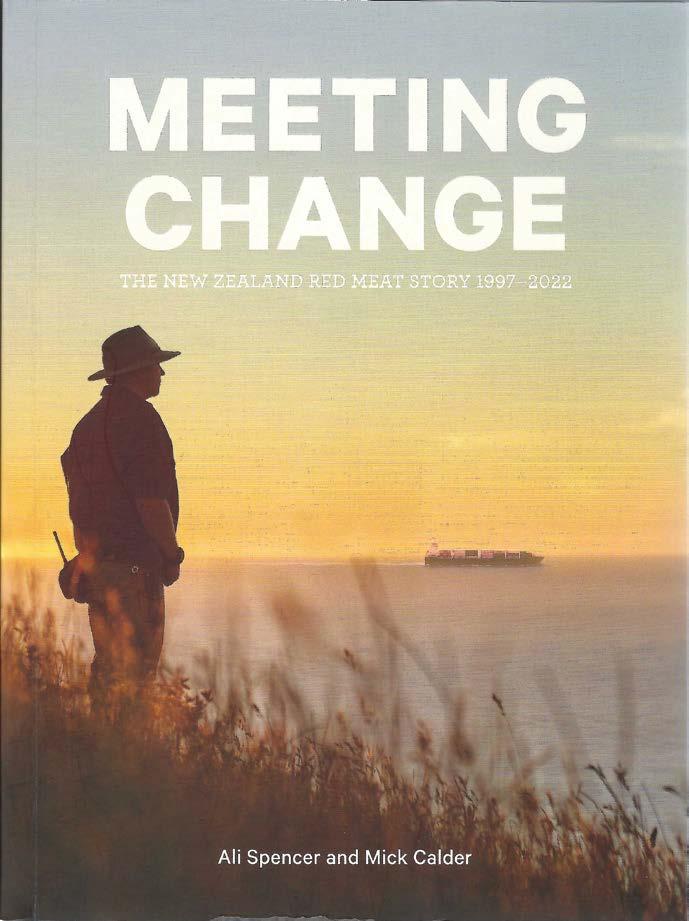
Published by Mary Egan Publishing. ©NZ Meat Board 2022 [ISBN Softcover 978-0-473-60979-5]
Published for the NZ Meat Board, Meeting Change covers a period during which change has escalated beyond recognition, especially in the last 10 years. The book was written to celebrate the Centenary of NZ Meat Board. The authors note that the industry has seen more change over the last 25 years than in the 75 years before that.
I think it is important to note here that B + L NZ, which is more generally familiar, is the “industry-good” organisation that supports our meat farmers. The Meat Industry Association (MIA) is the voluntary trade association representing New Zealand's red meat processors, marketers and exporters. The NZ Meat board concerns itself primarily with managing quotas for our exports.
The period covered by this book sees an industry challenged by the needs for increasing market flexibility (external) and adjustments to farm processes and animal husbandry (internal). Over this time “an enormousamountofsciencehasunderpinnedextraordinaryprogress by New Zealand farmers to increase efficiencies and reduce costs”
The advent of the Covid pandemic showed that all representatives of this primary industry; farmers, processors, industry bodies and government agencies can work together, a model that needs to be sustained for the health and wealth of the entire value chain. Sirma Karapeeva, CEO of the Meat Industry Association, comments that the industry discovered “the value of a single voice”
TheredmeatsectoristhebackboneoftheNewZealandeconomyand we would all do well to recognise this and pay tribute to our farmers and the excellent work they and their industry-good organisations do for it.
An excellent reference resource
The book is divided into chapters by topics, for example, Farmers, Evolution not Revolution, Genetic Gain, Farming Excellence – to a total of 29.
The shape of the content, dealing with each topic per chapter, means that it is difficult to follow a comparative timeline, which this writer found disconcerting. The detail covered is extensive, meaning that the writers have created a reference that will stand long into the future. Extensive references are included so again, a student of this industry will not fail to find the information they are seeking.
This also means that it is a concentrated read, certainly not for relaxation. The text is peppered with acronyms which for practical concerns of length are appropriate, but I believe most readers will not be immediately familiar with many of them.
The final two chapters, Meeting Change and “Reasons to Celebrate” provide an excellent summary of what has gone before, between these covers, and in the industry. The industry needs to actively inform those outside the industry, particularly in our urban centres, just how valuable are farmers’ contributions and foresight into future environmental issues. It is their hard work, from before the farm gate to industry research that will protect our country’s future.
Ben O’Brien, long time staff member of both the NZ Meat Board and B +L NZ, succinctly summarised the sector’s achievements over the last 25 years. He paid tribute to the “rather extraordinary culture” of the red meat sector, which focuses on the customer – whether it is the farmer to whom it is providing a service or the buyer of the myriad of products that come from livestock. “It’s extremely pragmatic and meritocratic. It’s innovative and doesn’t take too many prisoners. It’s a tough industry and to be successful you need to have your wits about you,” he said.


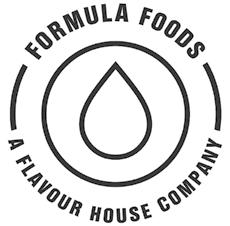
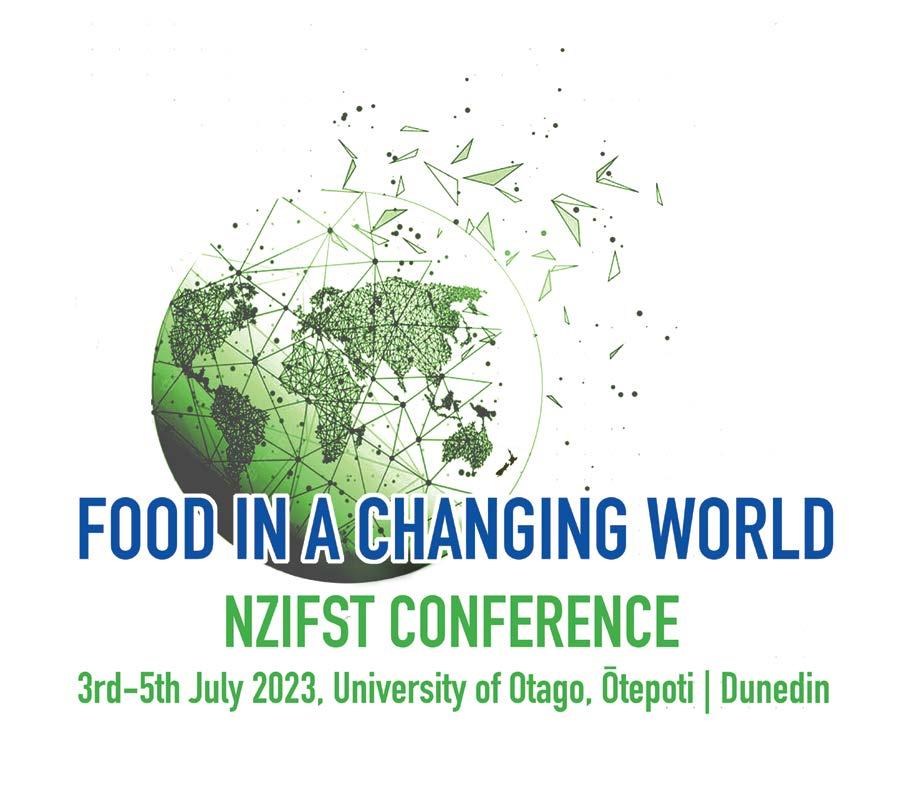

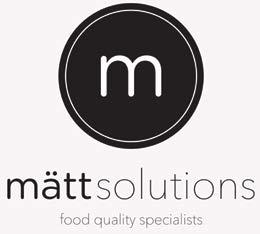

NZIFST President
Phil Bremer
phil.bremer@otago.ac.nz
NZIFST Vice-President
Esraa El Shall
NZIFST Executive Manager
Wendy Bayliss
PO Box 44322
Pt Chevalier
Auckland 1022
New Zealand
Phone: 022 549 8483,
Email: wendy@nzifst.org.nz
Website: www.nzifst.org.nz
Graham Eyres, University of Otago, Chair

Amit Taneja, Fonterra
Aswathi Soni, AgResearch
Biniam Kebede, University of Otago
Don Otter
Evelyn Fraser, Consultant
Matt Steven
Neala Hart, Fonterra Brands
Pankaj Sharma, Open Country Dairy
Pat Silcock, University of Otago
Anne Scott, FoodNZ
Wendy Bayliss, NZIFST, Conference Manager
Melanie Walker, Avenues Event Management
On behalf of the Conference Committee, I would like to warmly welcome you to the 59th Annual NZIFST Conference, held in Ōtepoti | Dunedin for the first time since 2001 on the historic campus of The University of Otago, New Zealand’s oldest university, founded in 1869. We are also excited to bring you a joint Welcome and opening plenary session in conjunction with the New Zealand Food Safety and Science Research Centre (NZFSSRC).
The NZIFST conference theme, “Food in a Changing World”, was chosen to recognise that the food industry is operating in an environment where the only constant is change. New Zealand is a small nation at the edge of the globe,yet we are strongly affected by the global environment and external pressures, such as disruptions to supply chains,work force shortages, climate change, sustainability targets, political unrest, and ongoing impacts of the COVID-19 pandemic.
How can the food industry best respond to the myriad of challenges it is facing? The aim of the 2023 conference is to better understand the drivers of change and how the food industry and NZIFST can respond to provide the best possible future of food in Aotearoa New Zealand.
The plenary speakers and session topics have been selected to facilitate this discussion. Our plenary speakers will be discussing food integrity and security; science insights into food safety, quality and health; food waste and sustainability; mātauranga Māori; and reflections on the“new normal”for the future of the food industry in New Zealand After several years affected by border closures, we are pleased to be hosting several international speakers to add their perspective to these debates.
I encourage you all to make the most of the talks, social events and networking opportunities to discuss these issues, meet new people and reconnect with friends and colleagues. Please also support the students for the poster and 3 minute pitch competitions, and help these students become the future leaders of the food industry in New Zealand. Finally, I would like to thank the conference committee for their hard work putting together this exciting programme and look forward to sharing the experience with you all.
The committee is pleased to announce the following plenary speakers:
Lain Jager is best known for his time with the hugely successful kiwifruit marketer Zespri where he was CEO from 2008 to 2017. During his tenure as CEO Zespri grew strongly through the impact and recovery from the bacterial vine disease Psa. Grower returns doubled, and the share price grew from $1.00 to $8.00.

Today, Lain is involved in a range of investment projects in Tourism and Agribusiness, serves as a Director on several Boards, was the Chairman of the Primary Sector Council which produced the Fit for a Better World Report focused on the New Zealand Food and Fibre Sector, and is the Co-Chair of Te Puna Whakaaronui – a Food and Fibre think tank.
Brett Cowan has a diverse background including an honours degree in mechanical engineering, registration as a medical practitioner, studies in theology and ancient history, and an MBA from the University of Auckland.
He is ESR’s Chief Scientist on the senior leadership team, responsible for leading research and he has taken on significant responsibilities in supporting the COVID-19 response and research activities for New Zealand.

Brett was previously the General Manager of Business at Auckland UniServices Limited, the commercial arm of the University of Auckland. Prior to this he was Associate Professor and Head of Radiology also at the University of Auckland where he set up and directed the internationally recognised Centre for Advanced MRI.
He has taught ethics at the University of Auckland and was previously deputy chair of the Human Participants Ethics Committee.
Brett’s paper explores the worlds of Misinformation and Disinformation

Chief Executive and CoFounder Sumfood
After completing a PhD in Public Health, Helen co-founded Oritain in 2007. she then went on to found Sumfood and under that umbrella has been working to build food system intelligence through consumer reporting, price monitoring and social listening (founding InstatData in 2022). Helen has held several governance roles with local and national bodies including the Board of ESR, the advisory committee of Export NZ and international governance experience with the United States Pharmacopeial Convention (Expert Committee, Food Ingredients; Expert Panel, Food Fraud). As a food producer Helen has also been one of a small team that has developed a novel variety of cherry and achieved plant varietal rights.
Helen’s paper is titled: Food integrity, security, and circularity from a consumer-centric viewpoint.
Originally a farmer from Hawkes Bay, Craig leads teams who are growing businesses in the biological and manufacturing value chains. He has worked internationally in Board and Executive capacities with Lion, Cadbury, Yoplait, Dr Pepper/7Up and Heinz and is currently a leader with New Zealand’s international business development organisation, NZTE. He’s Chair of the Industry Advisory Panel for the High Value Nutrition National Science Challenge developing scientificallyproven health foods; Chair of the Industry Advisory to MPI for development of the F&B ITP and a Board Member of the NZProduct Accelerator, assisting businesses commercialise new designs and manufacturing methods. He’s a member of the MBIE College of Assessors, and a graduate of Massey University (NZ) and of Thunderbird School of Global Management (Arizona, USA).

Craig’s paper is titled: New Zealand’s national and international economy as it relates to food security

Professor in the School of Chemistry, Faculty of Science at Monash University
Professor Marriott’s research commenced at LaTrobe University (Ph.D.) then continued at Bristol (Postdoc). Academic appointments include the National University of Singapore, then in Melbourne at RMIT and Monash University. His primary research is in comprehensive two-dimensional GC (GC×GC) and multidimensional GC, and mass spectrometry, including fundamental development and a broad applications base. Foods, flavours and beverage analysis feature strongly amongst key directions for the advanced separations technologies he has developed.
Professor Mariott’s paper is titled: Do I really need to know the volatile compounds in my sample – and what should I do about it?
Distinguished Scientist, University of Wisconsin-Madison Food Research Institute
Kathy Glass joined the Food Research Institute at the University of Wisconsin-Madison in 1985 and currently serves as Associate Director. Her primary role is to work with the food industry to develop and validate formulation-safe foods. Kathy is an active member of several advisory committees and professional associations including the National Advisory Committee for the Microbiological Criteria of Foods and the International Association for Food Protection (IAFP). She has served as Past-President of IAFP and its Wisconsin affiliate, is the recipient of the 2011 IAFP Fellow Award, the 2017 National Cheese Institute Laureate Award, and 2019 Wisconsin Meat Hall of Fame. In addition, Kathy is a regular instructor at workshops on challenge studies, Listeria control methods, and dairy and meat safety. She earned her Doctorate in Food Microbiology and Safety at the UW-Madison, focusing on formulation safety of pasteurized process cheese products.
Kathy’s paper is titled: Formulating foods for microbial safety in the clean label era.

Professor of Nutritional Sciences at the Riddet Institute
Warren McNabb is a Professor of Nutritional Sciences at the Riddet Institute, a New Zealand Centre of Research Excellence (CoRE), hosted by Massey University. His research interests include nutrition for health, sustainable nutrition, humanmicrobiome interactions, physiology and metabolism.
Warren leads several programmes including the MBIE-funded, New Zealand Milks Mean More and the Sustainable Nutrition Initiative. Warren is also an Associate Investigator in the HVN National Science Challenge, Healthy Digestion and Infant Health. His focus is on food structures-nutrient digestion interactions, clinical investigations of nutrition, and sustainable nutrition.
Warren is a Fellow of the New Zealand Institute of Agricultural and Horticultural Sciences, a Professional member of the New Zealand Institute of Food Science and Technology, a member of the American Society of Nutrition and the Canadian Nutrition Society, and has served on national and international research advisory and funding panels.
Warren’s paper is titled: How do structures in milk function within foods: their impact on human digestion and nutritive value following processing?
Prime Minister’s Chief Science Advisor | Kaitohutohu Mātanga Pūtaiao Matua.
Juliet trained at Oxford University and moved to New Zealand in 1993 where her career has included roles in both Crown Research Institutes and universities. Juliet’s research background is broad and interdisciplinary, with particular interests in fundamental and applied protein science. She has held an Industry and Outreach Fellowship with Callaghan Innovation, founded a start-up company, chaired the Marsden Council, served on the Board of Directors of Plant and Food Research, and is currently on the Board of Te Papa.
Since Juliet’s appointment in 2018 as the Prime Minister’s Chief Science Advisor she has supported the science and science advisor community to provide advice to the Prime Minister, Ministers, and the public on a wide range of topics

Juliet’s paper is titled: Food Waste: a global and local problem.
Glen is responsible for the risk management and intelligence functions associated with developing food standards. This includes labelling, contaminants, composition, additives and foods requiring pre-approval such as novel foods, public health nutrition standards, and the economics and social science inputs to standards development.
His background is in public health and he has held a range of leadership positions within New Zealand’s central government food and biosecurity authorities, such as the Ministry for Primary Industries.

Glen thinks that the mega trends of the increasing integration of global food supplies, emerging risks, increased attention on food's role in public health and tightening public sector budgets are strong forces that drive the need for increased collaboration, agility and creativity.
He is currently a member of the Singapore Food Story Advisory Panel and represents the work of FSANZ on a FAO Technical Working Group on cell-based food products.
Glen will present Reflections on "The New Normal" and what the future may hold for the Food Industry in NZ at the Conference Closing Session
See the conference website for the more information about conference programme and speakers HERE.

The conference will be taking place at the University of Otago Campus in the St David Lecture Theatre, and Castle and Burns Complexes. The posters, exhibition and registration desk will be in The Link building.

The Registration Desk is located in The Link which will be right by the front doors and is your first point of call for all matters associated with the conference, from programme and amendments to social function ticket purchases.
The registration desk will be open daily from around 07:30 until end of sessions.
Registration contact – phone Bailey 027 426 0129
If you are making a presentation at the Conference you are requested to meet with the A/V technical support staff at least 1 hour prior to the presentation to load and check your material. Registration staff will direct you to the “Speaker’s Room” which is close by the registration desk. Alternatively, please contact Wendy on 021 122 9161 or Amanda Denholm 021 537 157
Name badges must be worn at all times. Your name badge is your ‘entry ticket’ to the technical sessions of the conference and into the refreshment breaks.
All morning teas, lunches and afternoon teas, and the exhibitor and poster network function on Monday will be in the Exhibition areas (In The Link next to stand 5)
Barista coffee is available free of charge from the coffee cart situated in The Link next to Stand 5

The student competition posters are around the walls in the main conference room. These are available for viewing during refreshment breaks.
NOTE: Poster authors are expected to be in attendance with their posters on MONDAY from 17:00 to ~19:00. Poster competition winners will be announced at the Awards Dinner on Tuesday evening.
On Tuesday morning, students in this competition have 3-minutes and 1-slide to present their work. The 3MP competition winners will be announced at the Awards Dinner on Tuesday evening.
The organisers have made every effort to secure the speakers as advertised but reserve the right to amend the programme without recompense to the delegates.
If you are feeling unwell, are waiting for results of a COVID-19 test, or are a household contact of a positive COVID person, please DO NOT come to the hotel or the conference venue.
You are reminded that you are responsible for the security of your own items. Please do not leave personal items unattended. Whilst every care will be taken by the venue and organising personnel, Otago University Campus, and the NZIFST Inc. will not be held responsible for any loss or damage to any property of any delegate or exhibiting company, by theft or fire or any other cause whatsoever outside the control of the venue.
In the event of an emergency please follow the directions of the venue staff.
Warn others in the immediate area as you evacuate via the nearest exit.
Fire hoses and fire alarm switches must remain visible and accessible at all times.
Personal details provided by you on the registration form are confidential to NZIFST. These will be used by NZIFST for conference purposes (such as registration, name badges, delegate lists, etc) and made available to conference exhibitors and sponsors or used for general contact purposes by the NZIFST Secretariat. Your details will not be passed onto any third party.
1-1:30pm Tuesday in Castle 1, University of Otago
Additional tickets for all social functions are subject to availability and may be purchased from the registration desk at the conference.

Town Tall, Dunedin from 6:30pm Tuesday. A sumptuous dinner will support the presentation of NZIFST Awards including
• The J C Andrews Award, the Institute’s most prestigious Award.
• The Ron Hooker Award for Exemplary Service
• New Institute Fellows
• Distingushed Service Award
• Emerging Leader Award
• Student Poster Prizes (sponsored by the University of Otago Department of Food Science)
• 3MP Competition Prizes (Sponsor TBC)
And Food Industry Awards including
• NZFS Award for Significant Contribution to Food Safety
Come and recognise and congratulate your fellow members. Tickets are $109.25, they are not included in the registration fee.
Monday 3rd July, 17:00 – 19:00, exhibition areas. You are invited to join us for light refreshments at the close of sessions on the first day. One ticket included in the full (Delegate, Speaker and Student) registrations or Monday Day Registration.
Monday 3rd July 7 -9pm.
Student and Graduate Members are invited to gather and relax with their peers for a fun evening. Numbers limited and must be booked when registering. Light meal provided; cash bar applies. No charge to registered eligible delegates.
Additional tickets for social functions are subject to availability and may be purchased from the registration desk at the conference.
The following awards will be announced and presented at the NZIFST Awards Dinner on Tuesday 4th July.
The J C Andrews Memorial Award is the most prestigious award presented by the New Zealand Institute of Food Science and Technology (Inc.). It is presented in memory of Massey University’s first chancellor, Dr John Clark Andrews, who proposed that a food technology degree course be established at Massey University.
The J C Andrews Award recognises an Institute member who has made a substantial contribution to science and technology in the food industry.
The J C Andrews Award winner will give a public address after lunch on Tuesday 4th July in the main conference room following the NZIFST AGM.
Fellowship is an honour bestowed upon a member to recognise their substantial contribution to the profession of food science and technology, through outstanding service in at least one of the following areas:
• Research and development leading to the creation of new knowledge
• Technology transfer and education
• Development of the food industry, including promotion of its ethical standards and public image
• Development of the affairs of the Institute, its Branches or Divisions.
This award recognises ongoing distinguished service and contribution to the Food Industry, support over a long period, above the normal line of duty.
Established to honour and recognise the outstanding contribution given by Ron Hooker to the NZIFST since its formation in 1965, this award is to recognise significant past or current service or contribution to the NZIFST, developing the affairs of the Institute, its Branches or Divisions.
This award is to recognise a young technologist (aged 30 years or under) for their endeavour or achievement AND leadership potential within the food industry.
Recognises the best posters at the conference submitted by student members of the Institute.
Recognises the best oral presentations at the conference by student members of the Institute.
This award recognises an individual, a team, or an organisation that has made a significant improvement to food safety in New Zealand. This could include a development or improvement of a specific process or operation, and it could be for one particular sector or across a few sectors. Improvements in any of the following areas may be recognised:

• Science and research
• Equipment or processing technology
• Product or packaging development
• Industry best practice
• Building and maintaining a food safety culture (e.g. staff engagement processes and practices; educational or training
Places limited at the dinner – reserve yours now
DAY 1 - MONDAY 3rd July
NZFSSRC Women in Science Breakfast (Student Union Building)
Registration opens
Joint NZFSSRC / NZIFST Welcome
Welcome & Introduction
Plenary A (Joint NZFSSRC and NZIFST): The New Zealand Food Sector - the new normal
Plenary A1: Lain Jaeger (Chair Primary Sector Council)
Plenary A2: Brett Cowan (ESR)
Refreshments
Plenary C : Food Integrity, security and circularity
Plenary C1: Helen Darling (InstatData and Sumfood Ltd.)
Plenary C2: Craig Armstrong (NZTE)
Refreshments
Posters & Refreshments
Early Career Foodies' Function
Emerson's Dinner (Doors open at 7pm; Seated by 7.30pm)
DAY 2 - TUESDAY 4th July
Registration opens
Plenary E: Science Insights into Food Quality and Health
Plenary E1: Prof. Phil Marriott (Monash University, Melbourne, Australia / Patricia Coleman Lecture)
Plenary E2: Kathy Glass (UoWisconsin)
Plenary E3: Prof. Warren McNab (Riddet Institute, MU)
Refreshments
Refreshments
AGM and JCA Address
NZIFST AGM
JCA winner's Address (30 mins)
Plenary G: Food Waste
Plenary G1: Professor Dame Julie Gerrard (PMSCA)
Refreshments
Awards Dinner - Town Hall
DAY 3 - WEDNESDAY 5th July
Plenary J1: Glen Neal (FSANZ) Plenary J2: TBC
Plenary J3: Closing Plenary
Farewell & announcement of 2024 Conference
The NZIFST acknowledges and appreciates the generous support of our many sponsors and exhibitors. Delegates will have ample opportunities to view the exhibits and meet the staff during refreshment breaks. Please support our exhibitors and sponsors, during and after the event.
Principal Partner
MattSolutions/Formula Foods
Major Partner
Oritain
Exhibitors
Anton Paar New Zealand
Bio-Rad Laboratories Ptyltd
Cuddon FreezeDry
www.formulafoods.co.nz / www.matt.nz
http://oritain.com/ www anton-paar.com/nz/en
www.bio-rad.com
www.cuddon co.nz
E
E HEDG
urofinsFood andWater Testing NZ
Food Tech Solutions Ltd
Hygiena
John Morris Scientific Pty Ltd
Lab Supply
Mediray NZ Ltd
NZ Medical& Scientific
Ngaio Diagnostics
OneLab
Plant & Food Research
Total Lab Systems
Thermo Fisher Scientific
Early CareerFoodies Function
Daily Refreshment Breaks
Lanyards
Student Poster Competition
Student EssayCompetition
Conference Sessions
Coffee Cart
www.ehedg.org/new-zealand
www.eurofins.co.nz
www.foodtechsolutions.co.nz
www.hygiena.com
www.johnmorrisgroup.com
www.labsupply.co.nz
www.mediray.co.nz
www.nzms.co.nz
www.ngaio.co.nz
www.onelab.co.nz
www.plantandfood.co.nz
www.totallab.co.nz
www.thermofisher.com
Azelis NZ Ltd
Dominion Salt
TLL Food Technology
University of Otago Department of Food Science
Food Tech Solutions Ltd
Cuddon Freeze Dry
Riddet Institute
Eurofins Food and Water Testing NZ
Formula Foods is a 100% New Zealand owned flavour and ingredient company based in Christchurch. Our team of flavourists utilise advanced technologies to make tailor-made flavours from base natural materials and offer customised solutions with low minimum order quantities on short lead-times.
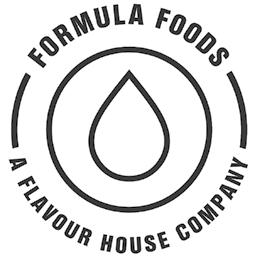
Formula Foods has a comprehensive range of products and services to offer the food manufacturing industry, including:
• Flavours: Formula Foods designs and manufacturers flavours right here in New Zealand. We have a wide range of flavours to choose from including natural, artificial, and functional flavours.
• Ingredients: Formula Foods also supplies a variety of ingredients to the food manufacturing industry. These ingredients include natural colours, oleoresins and antioxidants.
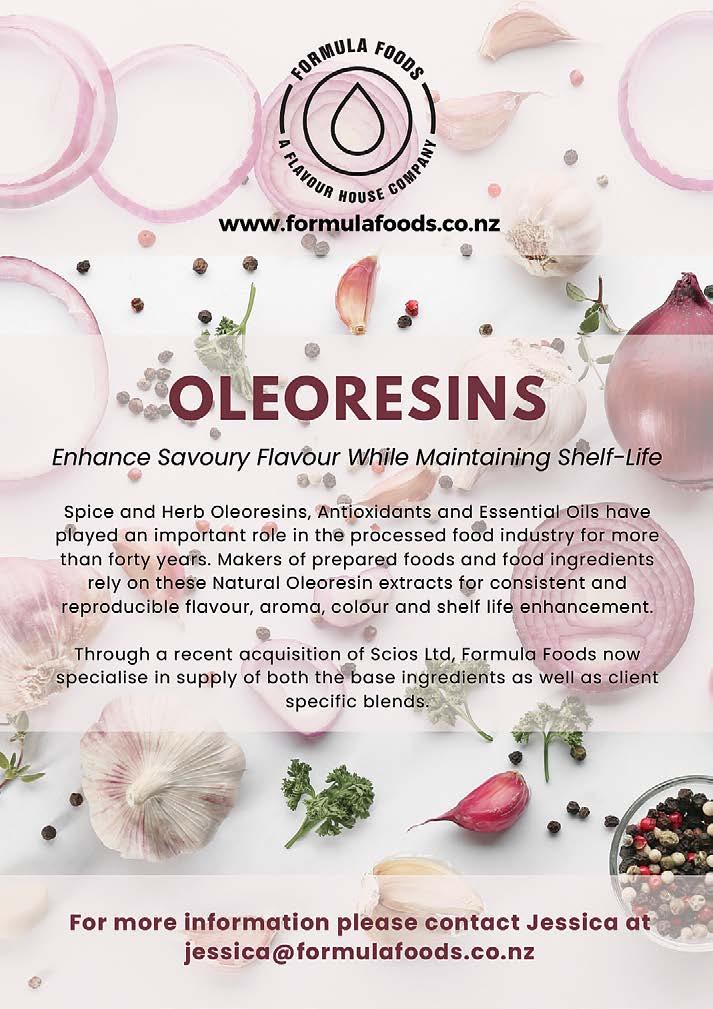
• Ser vices: Formula Foods offers a range of services to the food manufacturing industry including flavour development, ingredient sourcing, and technical support.

“We work closely with clients to supply a unique, tailor-made range of products and services, of unparalleled quality and performance, to the food manufacturing industry, who in turn will achieve improved, high quality, costeffective and innovative products with improved shelf stability”
Dave Rout, CEOImprove food quality, reduce waste, and boost your business with the support of Mätt Solutions.
Mätt Solutions is New Zealand's leading provider of food quality and process control instrumentation as well as comprehensive shelflife testing services. We work alongside our clients to understand your product, identify your unique needs and suggest a solution that improves quality and longevity.



The importance of food quality cannot be overstated, as it directly impacts both the well-being of individuals and the success of businesses. At Mätt Solutions, we offer a unique approach for evaluating shelf life and ensuring top-notch quality, allowing you to prevent unsafe food, product recalls, costly rework, and the resulting damage to your reputation. Our team of specialised food scientists collaborates closely with you, analysing your product and optimising its shelf life and overall quality.
Through our industry-leading and comprehensive testing process, we provide invaluable guidance on how to extend shelf life and enhance quality. Our extensive range of tests includes meticulous lab-based analysis, sensory and taste evaluations, as well as instrumental testing of crucial indicators such as colour change, texture, and water activity. With our expertise and thorough approach, we equip you with the knowledge and insights necessary to achieve superior food quality and maximize product longevity.
"Less waste means a greener planet and a better bottom line. It benefits your business to test your product and deliver the very best quality to your customers. Our expertise and support services will deliver results you can trust."
Bob Olayo, ManagerFounded in 2008, Oritain is a world leader in using forensic science to verify product origin.
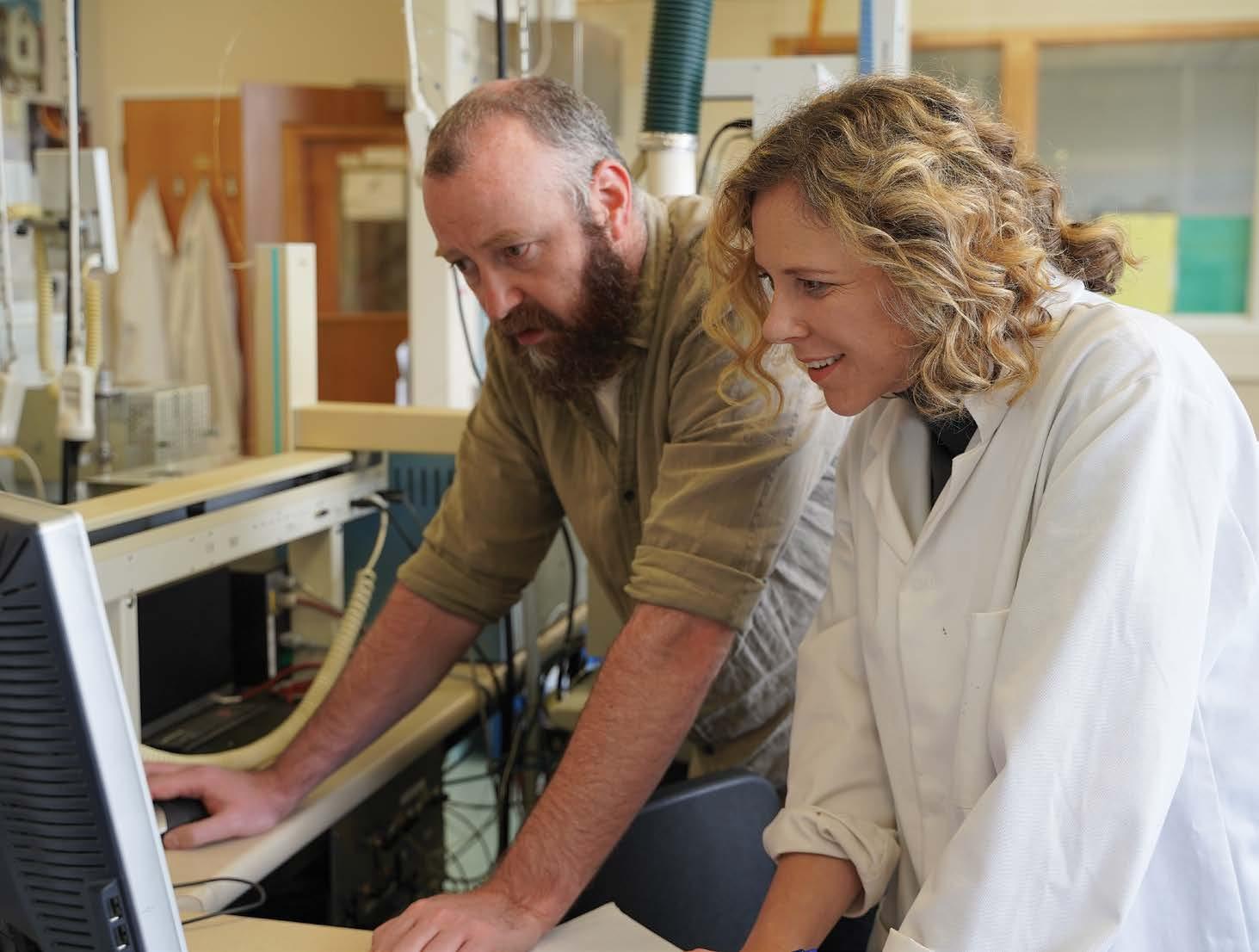

Headquartered in New Zealand, Oritain partners with some of the world’s leading organisations to support their ESG commitments, reduce the risk of fraud and unethical practices, and protect their reputations.
A product’s origin can be identified by measuring the varying chemical compositions of different environments. As something
is grown, reared or made, it absorbs a unique ratio of elements, depending on the local temperature, altitude, precipitation and soil condition – known as an origin fingerprint. By analysing the unique isotopic fingerprint, Oritain can trace it back to its source, ensuring its authenticity and ethical production. Oritain’s methodology is robust enough to stand up in a court of law, and it can never be tampered with, replicated or destroyed.
While the move to sustainable practice is driven by a desire to change our impact on the world, we can’t do this without knowing the certainty of our actions. Transparency is one way of holding ourselves accountable, yet for it to be effective, it must be underpinned by proven traceability.
Oritain’s scientific traceability does just that. Working with Mother Nature, we help brands across multiple industries to verify the origin and authenticity of their products and raw materials. With this verified truth, brands are empowered to make changes across their supply chain to operate more sustainably, and to pass those assurances onto their consumers.
Anton Paar develops and manufactures analytical instruments that generate reliable data, enabling food companies to proceed with confidence in product development, production and quality control. Anton Paar is the world leader in the measurement of density, concentration, material characterization, CO2/O2, viscometry/rheometry and provides customtailored automation and robotic solutions.
Laboratory and process measuring instruments from Anton Paar are used in the control of incoming goods, quality control and research throughout the food industry. The product portfolio ranges from portable measuring instruments over high-precision automated laboratory or process measurement technology to individual industry-specific solutions. Moreover, Anton Paar now offers 3 years warranty on instruments in conjunction with the recommended maintenance intervals.
The products we supply to the food industry include:
• Powder Characterisation – Techniques to characterise water sorption rates, shelf life, bulk density and tapped density for storage and transportation of granular foodstuff.
• Density Meters – Density and concentration measurement for liquids and solids.
• Microwave Digestion – Digestion of samples, evaporation, acid leaching, and extractions.
• Oxidation Stability – Determination of oxidation stability by using increased temperature and an excess of pure oxygen
• Particle size Analyzer – Measures a wide range of particle sizes in liquid dispersions or dry powders.
• Raman Spectrometers – Identification and verification of samples.
• Rheometer – Checks over flow curve and yield point determinations to complex rheological investigations.
• Refractometer – Brix and concentration measurement of liquids and solids.
• Viscometer – For liquids, pastes and gels
To learn more about Anton Paar’s products and their applications please come and visit our stand at the NZIFST Conference.


Bio-Rad Laboratories, Inc. develops, manufactures, and markets a broad range of innovative products and solutions for the life science research and clinical diagnostic markets. The company is renowned for its commitment to quality and customer service among university and research institutions, hospitals, public health and commercial laboratories, as well as the biotechnology, pharmaceutical, and food safety industries. Founded in 1952, Bio-Rad serves more than 100,000 research and healthcare industry customers through its global network of operations. The Company employs more than 8,260 people worldwide and had revenues exceeding $2.9 billion in 2021.
Bio-Rad’s Food Science Division is based in Hercules, CA USA and Paris, France. Our main production sites are in France, Singapore and USA. Bio-Rad is a worldwide leader in real-time Polymerase Chain Reaction (PCR) and has strong expertise in microbiology linked to the heritage of Pasteur Institute. Bio-Rad manufactures tests for food safety with a complete line of solutions for food pathogen testing. We offer a full menu of iQ-Check real-time PCR test kits for the detection of key pathogens, culture media for nutritive enrichment and RAPID'Chromogenic media with easy colony identification for detection of pathogens and enumeration of quality indicators. As an instrument manufacturer, Bio-Rad also provides instrument options for both low and high-volume users, including our iQ-Check Prep automation system. At BioRad, providing products for food, beverage, industrial water, and veterinary safety diagnostics is a relationship that we’ve built with our customers over 70 years.

Cuddon Freeze Dry are delighted to announce the launch of our new ‘green’ range of commercial conductive batch freeze dryers. Designed with reduced whole-of-life costs and reduced environmental footprint from the outset, we are incredibly proud to be leading the field in this technology.
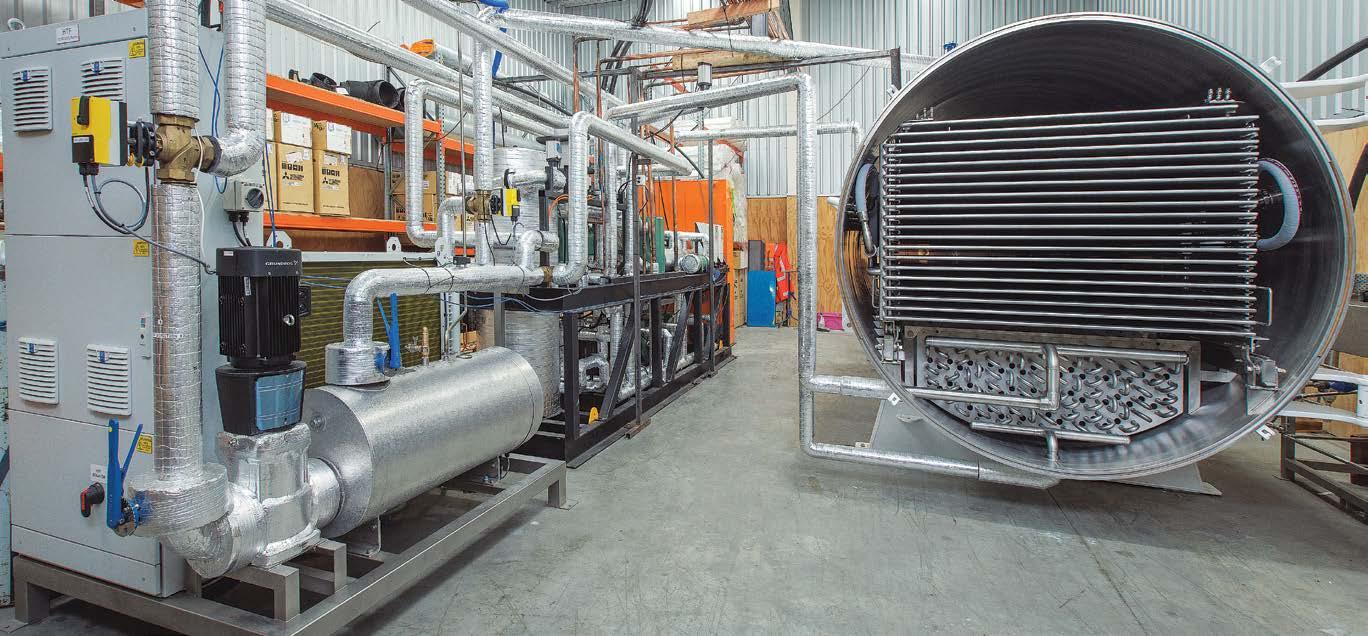

With the global movement to replace synthetic refrigerant gases
Bringing global expertise to regional New Zealand. We think it’s important to be close to our customers, which is why you’ll find Eurofins Food and Water Testing NZ at eight locations from Auckland to Invercargill. And we’re still growing – adding new capacity and logistics to make sure our world-class food and water laboratory testing is accessible to all who need it.
While our roots are local, our expertise is global. As part of a unique international network of 940 laboratories across 61 countries, we tap into specialist centres of excellence for the latest testing technologies, processes, and innovation. We draw on a portfolio of over 200,000 analytical methods, and offer customers across the dairy, meat, seafood, food processing and petfood sectors an unmatched scope of food and water analytical testing, supported by world-leading scientific expertise.
When you partner with Eurofins Food and Water Testing NZ you bring global capability to your doorstep – wherever you are in New Zealand.
www.eurofins.co.nz

with more environmentally acceptable alternates (driven by the Montreal Protocol and updated by the Paris Agreement 2015), the new range of Cuddon freeze dryers has been specifically designed, built and optimised for CO2 refrigerant; there is no compromise on performance often associated with dropin alternate refrigerants. The range matches or exceeds the performance of the previous Cuddon R507 general purpose freeze dryers.
We will also be offering a retro-fit package to enable our current clients to switch to CO2 refrigerant. Due for release by the end of March 2023, there will be 3 options: from a simple switch out of refrigeration machinery through to a full upgrade to the higher capacity shelf area, ice coil and CO2 refrigerant.
Experience Mediray, New Zealand's top laboratory and medical supplies distributor, committed to providing unparalleled products and services for laboratories in New Zealand. Our team of experts proudly represents cutting-edge global brands, such as bioMérieux, Perkin Elmer, Eppendorf, Hanna Instruments, Elisa Systems, Macherey-Nagel, and many others. Join us at our expo booth to explore an extensive range of premium products from over 30 industry-leading brands. Our offerings cover laboratory automation, sample and media preparation, pathogens, and analytical testing. Talk to our knowledgeable team with strong scientific backgrounds to guide you in selecting the ideal solutions tailored to your needs. Visit booth #15 and discover how Mediray can enhance your laboratory operations and improve productivity. Connect with us and embrace the opportunity to collaborate with a trusted partner dedicated to helping your laboratory thrive.


A trusted niche partner of high calibre testing solutions within the food/dairy, wine and research industries of New Zealand. Our beginnings were in milk quality with a long history of working closely with leading milk processors to help position New Zealand as a global leader in the dairy industry.
In our 25th year, operating from our Auckland warehouse, we service our customers nationally and internationally, fulfilling demands within the New Zealand food industry for a superb source of quality products from world renowned, dedicated manufacturers such as Charm Sciences, Stable Micro Systems (SMS), Megazyme, Neogen, and TRIO.BAS.
We are solely focused on positively enhancing your Food Safety and Quality Programmes to monitor manufacturing cleanliness, and finished product testing with rapid seamless testing options.
Please visit booth #11 and connect with us and discuss opportunities
to collaborate, to ensure our country produces only high quality products with a maximum shelf-life, whilst minimising recalls!
Our Product Range:
• Air Monitoring – Bacterial air monitoring – TRIO.BAS™
• Product Sterility Testing (EPIC) – UHT, ESL – Charm Sciences
• ATP Detection Systems – Advanced hygiene control – Charm Sciences
• Texture Analysis – Food profiling and packaging testing –Stable Micro Systems
• Enzymatic Test kits and Enzymes – Wine, beverage, food and research – Megazyme
• Allergens – Wide range of ELISA and rapid tests for testing food and environmental testing.

• Pasteurisation Confirmation – Milk (cow, goat, sheep), soft cheeses – Charm Sciences
• Rapid Antibiotic Residue Testing – Raw milk and other food matrices – Charm Sciences
We work closely with our clients, delivering solutions, ongoing relevant training, provision of rapid essential technical support, loan instruments, seminars, focus groups, and regular instrument demonstrations.
Please Contact: Jo Kelly-Tuckey, General Manager for inquiries. Tell us how we can facilitate making the most out of your quality control!
Hygiena is a world leader in food safety and animal health that provides integrated One Health Diagnostics™ from farm to fork to our customers around the world in the areas of environmental monitoring, production animals, food manufacturing, water, food service, healthcare and other industrial fields. We embrace the “One Health” principle through our core brands of Hygiena and BioChek with the belief that the health of people is closely connected to the health of animals in our shared environment.
Hygiena delivers rapid microbial detection, monitoring, and identification solutions to a wide range of industries. Utilising advanced technologies and patented designs, Hygiena provides industry-leading ATP monitoring systems, PCR-based foodborne pathogen detection, DNA fingerprint molecular characterisation systems, allergen tests, environmental collection devices, and more. Hygiena is committed to providing customers with highquality innovative technologies that are easy-to-use and reliable, backed by excellent customer service and support. Headquartered in Camarillo, California, with offices in Wilmington, Delaware, the United Kingdom, and China, Australia, and over 80 distributors in more than 100 countries worldwide, Hygiena products span the globe.


Ngaio Diagnostics offers microbiology, hygiene, allergen, food and drink testing solutions plus general laboratory products at competitive prices. Our wide range of products, from market leading suppliers, allow us to offer complete solutions to meet each customer's demand. Our range includes (but not limited to)
• Hygiena ATP systems – the most used ATP brand in the world
• Hygiena MicroSnap – delivers 6-8 hour quantitative results
• Hygiena ZymoSnap – easy and reliable Alkaline phosphatase testing in milk products
• CertaBlue – offers real-time micro and sterility testing

• MicroFast – offers a range of sheet media
• Hygiena BAX – a leading molecular system
• Allergen kits – for all requirements
• Meizheng Dairy Tests – rapid detection of antibiotics, pesticides, mycotoxins, and more
• SYSMEX – CUBE Flow Cytometry
Ngaio prides itself on being able to supply top class service, alongside industry leading solutions to every customer.
Contact Ngaio with any enquiries, or for technical assistance that you require.
John Morris Group has a proud heritage spanning 70 years, specialising in the supply, installation and servicing of precision instruments and consumables covering diverse industry sectors.

Supporting the food industry, our scope of instrumentation includes compositional analysis (fat and moisture and protein analysers, milk testing, fibre analysis, digestion and extraction, SPE), physical property analysis (viscometers, texture analysis, density
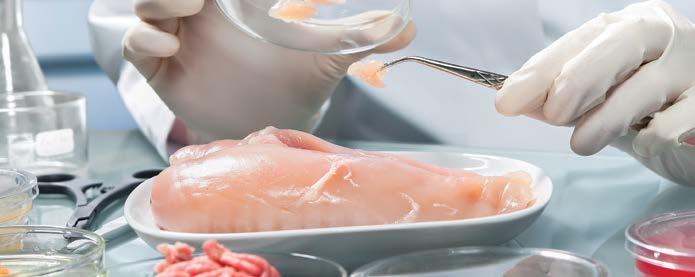

meters, milling/grinding/cutting) optical analysers (microscopes, colour measurement, spectrophotometers, Raman spectroscopy, refractometers), separation science (rotary evaporators, temp control) and an extensive range of general lab instruments and supplies. We provide a full range of services including:
• Maintenance and Repair
• Internal customer support team
• Field sales personnel
• Product specialists
• Trained service engineers
Our main distinguishing feature from all other instrument distributors in New Zealand relies on our additional capabilities to add value to a purchase in a manner our customers understand and appreciate.
As independent importers and distributors of laboratory equipment and consumables, with offices and warehouses in Dunedin and Auckland, Lab Supply partners with over 75 world-leading scientific brands to help our food and beverage clients expand research and innovation in the development, processing, and manufacture of their products.


We are committed to equipping you with the right solutions to help you grow your production capacity and lead the way in food safety and quality. Our portfolio includes a range of products for media and sample preparation, rapid chemical testing, bioburden and pathogen testing, analytical technologies, product testing and more. Brands we represent include Eppendorf, Memmert and Sigma-Aldrich, among others. We have also announced an enhanced partnership with Merck, to increase coverage in the food and beverage market and offer customers better access to Merck’s product range.
We understand the importance of accuracy and rigour in scientific work. With a focus on ensuring that the highest food safety and quality control standards are met, we make sure the products we supply provide accurate, reliable, and consistent results. Our staff are on hand to help you find the right product, offer technical advice, and make recommendations on the use of equipment you purchase from us. We also support what we sell with in-house servicing, calibration, and repair capabilities for a wide range of laboratory equipment. Talk to our team today about how we can support your business. Come and talk with us on our stand at the Conference.

Thermo Fisher Scientific is the world leader in serving science, enabling our customers to make the world healthier, cleaner, and safer. Our comprehensive range includes high-end analytical and process instrumentation, laboratory equipment, consumables, chemicals, and reagents. We support you from start to the end in all your analysis and servicing needs.
Collectively, our local team of more than 1000 employees are working together across Australia and New Zealand to provide unparalleled industry, product, and application expertise.
Our goal at Thermo Fisher Scientific is to provide solutions your lab can confidently use to succeed in food safety testing. We serve and support our customers as a one-stop source from sample collection to confirmation. Thermo Fisher Scientific has a proven microbiology solution for every step of your food testing workflow. This includes market-leading molecular instrumentation, sample preparation capability, PCR technology and lab equipment and plasticware for foodborne pathogen and quality indicator detection as well as traditional culture media and biochemical for immunological tests. Come to Thermo Fisher Scientific’s booth to find out how we can support in your Food Safety testing workflow.
Onelab offers a range of products for food manufacturers, from the laboratory through to process optimisation and finished product testing.
Onelab’s market position is to support the New Zealand market with high quality products that are imperative to your success.
Key to our food testing product range is R-Biopharm. R-Biopharm’s speciality is competence in food and feed analysis, offering innovative products and user-friendly solutions for the analysis of allergens, mycotoxins, microbiological contaminants and more. Technologies include Lateral flow, ELISA, Enzymatic, purification columns and Real-Time PCR.
Key products in our wide range include:
• R-Biopharm – Allergens, mycotoxins, microbiological contaminants, constituents, GMO’s, vitamins, hygiene monitoring
• BUCHI – Kjeldahl, NIR, evaporation, freeze dryers, meat extraction etc
• METTLER TOLEDO laboratory range – balances, electrochemistry, Spectrophotometers, Titrators, density, Refractometers
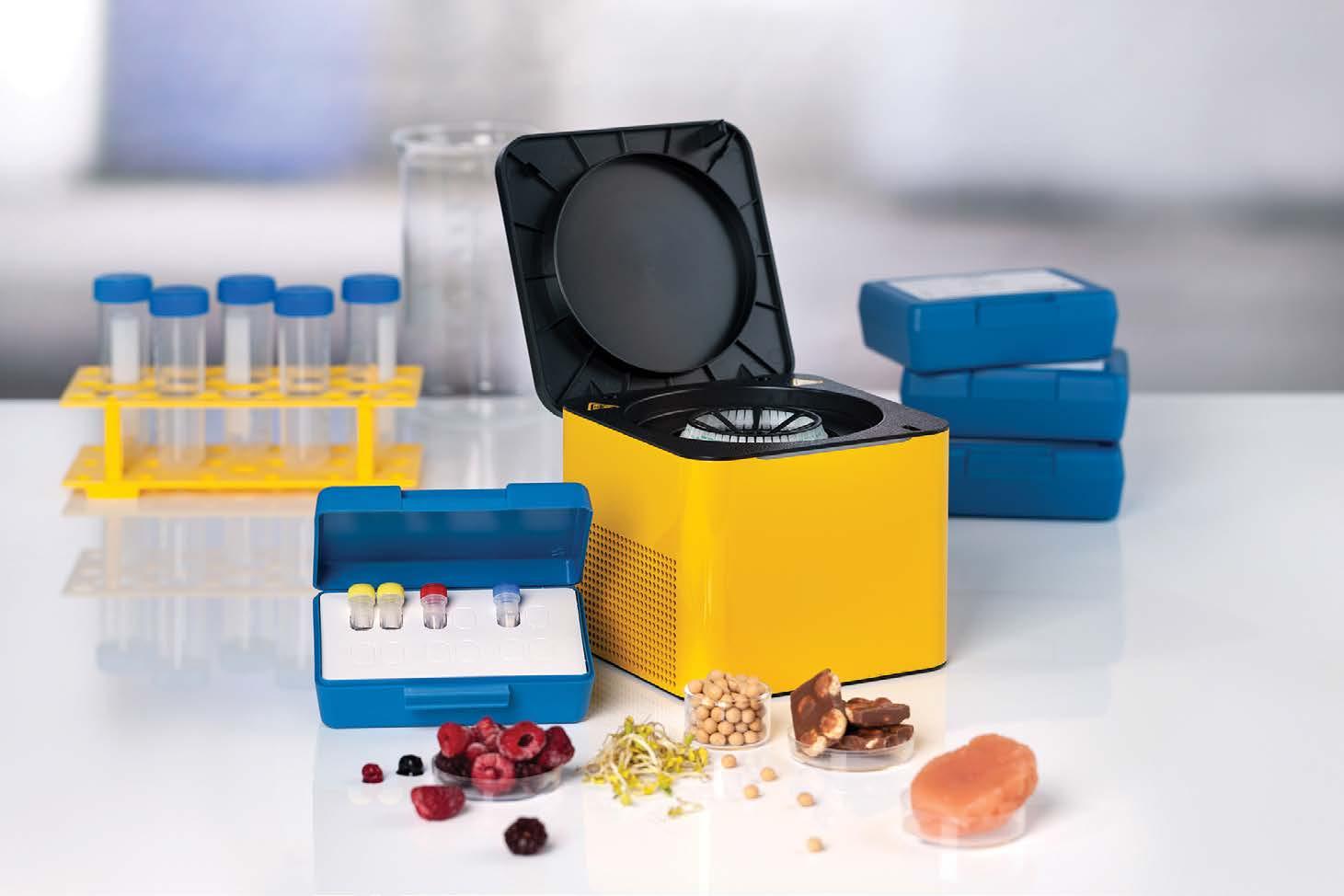
• Gerber Instruments – dairy testing equipmentt
• Nasco : Whirl Pak sample bags
• Masterflex – pumps and tubing
• PBI Air Samplers and accessories
• INTEGRA – Media Preparators, plate pourers, dispensing pumps, vacuum aspirators
• OMNI International – homogenisers and bead mills
• SSI Bio and Technoplas – Plastic laboratory consumables
• NEW! Petri Dishes
• Brand – consumables including volumetric glass, digital burettes, bottle top dispensers
• IKA – mixing, shaking, stirring, viscometers, ovens etc
• Grant Instruments – water baths, bench top equipment, dataloggers etc
• Labconco – Class II and laminar flowhoods, dry block evaporators, vacuum concentrators
• INTERSCIENCE – blenders, diluters, pourers, colony counters, dispensing pumps etc
• Milestone – Sample prep for metal analysis, mercury, fat extraction, fragrances and flavours
• SEAL Analytical – Discrete and segmented flow analysers, robotic sample prep automation – food and beverage analysers
• Hettich – Centrifuges and incubators
• Cole-Parmer – Everything laboratory!
• Rainin – Liquid Handling – pipettors, tips
• Tecan and Tecan Genomics – Liquid handling and NGS Library prep kits and automation
• Service – Onelab Service all brands we sell – Nationwide! Onelab believe Results Matter; contact us for your Laboratory requirements.


Need honest advice to find the right quality assurance products for your business?
Ask Steph or Simon @ Booth 13
NZMS Scientific offers a range of products to support all facets of in-house testing, giving local manufacturers a clearer picture of the issues affecting their product; detecting problems earlier and responding faster. Founded in Auckland 40 years ago, we've been backing this up with professional technical support with a team that understand your requirements.
“Our favourite is the MVP Icon” says Steph, Division Manager at NZMS Scientific, “It’s a smart system that keeps a record of Adenosine triphosphate (ATP) and HACCP parameters so it’s all in one place. It’s simple and it works”.
Regular monitoring of the final product and facility environment ensures high food safety standards. A range of products are available for detecting foodborne pathogens, spoilage organisms, and hygiene.
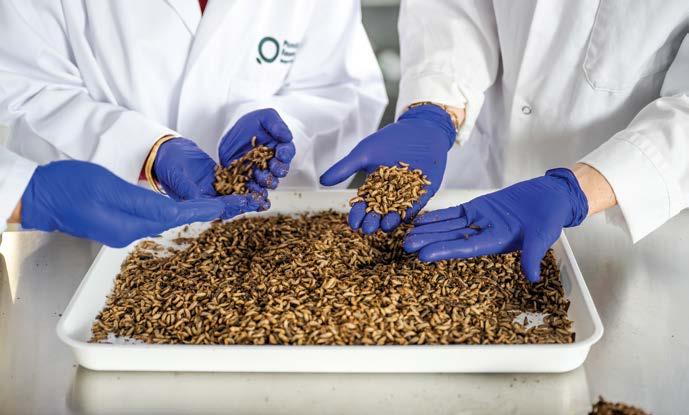
When food is around, the risk of cross-contamination of food allergens abounds. The Romer Labs range can provide instant results for immediate action, or detect sensitive trace allergens in less than 2 hrs.
Measuring the chemical composition of food, wine, beer or milk provides businesses with objective data to ensure consistent product quality.
Spoilage organisms in beer and wine can affect both beverage safety, final taste, and your brand. Veriflow technology provides easy to use PCR accurate results in 4 hours.
Our partners: Dimanco, Medical Wire, Millipore, Romer Labs, CDR Foodlab

Total Lab Systems Ltd is a New Zealand owned and operated company offering sales, service and support to the food industry throughout New Zealand.
We are the exclusive New Zealand distributor for the Ametek Brookfield range of viscometers, rheometers, texture analysers and powder flow testers. Brookfield has been the world standard in viscosity measurement for over 85 years.
We call them Positive Foods – foods that are good for people and planet. At Plant & Food Research, we want to make sure that Aotearoa New Zealand’s foods not only offer great nutrition and taste but also help to maintain, or even restore, the natural environment. Our research not only looks at creating the best foods – whether that’s through our breeding programmes or new product development – but also at ensuring production systems are sustainable and resilient. We’re answering the vital questions of today, like how to produce plant-based proteins that hit consumer values of nutrition, performance and cost, as well as working with tangata whenua to create new benefits for Māori. We’re also looking to the future, making sure we can continue to feed the growing global population with nutritious products they want to eat.
Through our research, we’re creating new ways to grow plants to produce more and better fruit, vegetable and arable crops from the same area of land. We’re helping growers reduce their use of agrichemicals so they only use what the crop requires and minimise their impact on the natural environment. We’re also finding out what’s good in food by understanding detailed nutrient and chemical compositions as well as running clinical trials so that consumers know what they eat is beneficial to their health. And we’re finding ways to use the waste streams so that nothing goes to landfill, while creating smart food systems that know exactly how to manage food so it gets to the consumer in the perfect condition.
Their new Vapor Pro XL (VPXL) is a chemical free moisture analyser with an accuracy down to 0.001%. It is ideal for any application in which Karl Fischer titration is used. The VPXL is fast and accurate and ideal for industries such as food and beverage, chemicals, pharmaceuticals, and plastics.
The Brookfield range complements Total Lab’s existing portfolio of food related instruments – A&D (balances and moisture analysers), Rudolph Research (refractometers and density meters), SI Analytics (pH and automatic titrators), MISCO (handheld refractometers) and Velp Scientifica for protein, fibre and fat and oil testing.
Contact us for your instrumentation, calibration, or service needs. Come visit us on our stand at NZIFST Conference

Azelis is a leading global innovation service provider in the specialty chemicals and food ingredients industry, present in 63 countries across the globe with over 3,800 employees. From ingredient selection to recipe formulation and new technology development, Azelis is here to support you from concept to production. Our technical experts can help you achieve, in line with your process requirements, the physicochemical, sensory, and nutritional balance that you need for your products, thanks to Azelis’ comprehensive portfolio across all food and beverage applications.
Whether you are a product developer, brand owner, contract manufacturer or a principal – Azelis is here to support you as your innovation partner. Visit our Customer Portal, a connected experience that inspires you with the latest market trends, articles, formulations, products, and related documentation. With just a few clicks, you can access the latest ingredient and market trends and order your samples and products. Innovate with Azelis today!
TLL Food Technology, an innovator in the food sector, transforms food product ideas into thriving enterprises. We deliver innovative and sustainable food development services to meet the demands of a competitive market.

Our expert team, with backgrounds in top global food companies and significant academic accomplishments in food and sensory science, upholds excellence in each project. We offer two separate yet complementary services: developing and commercialising new food products for businesses ranging from startups to established companies, and representing Elea's advanced Pulsed Electric Field (PEF) technology. This advanced technology enhances efficiency, reduces costs, and elevates food quality. While these services operate independently, their synergistic potential could offer added benefits. As TLL Food Technology paves the way in innovation, join us to shape the future of food innovation and explore how our solutions can fuel your business success.


The 2023 Food Structures, Digestion and Health international conference is the seventh in the series co-hosted by the Riddet Institute and CSIRO. It brings together world-leading scientists from diverse disciplines and innovators from the food industry with a common interest in designing Future Foods in Harmony with Nature. These foods will be sustainable, support optimal nutrition, human health and wellbeing, and appeal to the preferences of tomorrow's global consumers.
The Organising Committee for the 7th International Conference on Food Structures, Digestion and Health are pleased to announce that conference registrations and abstract submissions are now open. We look forward to welcoming you to Queenstown in November 2023.
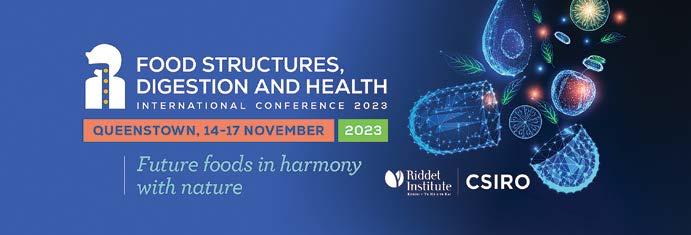
Dominion Salt is a New Zealand-based company that specialises in the production and distribution of salt. The company was founded in 1946, and since then, it has become one of the leading salt producers in the Asia-Pacific region.
Dominion Salt operates two large salt production facilities in New Zealand and supplies salt to the dairy, food processing, pharmaceutical and agricultural industries and exports its’ products to customers all over the world.

Dominion Salt has played a significant role in the country's food and provides a range of salt products specifically designed for use in the food industry, all of which are produced using the latest technology and strict quality control measures.
Dominion Salt’s commitment to sustainable and ethical business practices has earned it a reputation as a trusted and reliable supplier of high-quality salt products. With a focus on innovation and customer service, Dominion Salt continues to be a leading player in the global salt industry.

The food industry is undergoing a period of unprecedented change. In response, the University of Otago proudly offers a comprehensive ‘farm-to-fork and beyond’ degree. The BSc in Food Science has been re-designed to produce well-equipped graduates to address the challenges of improving food systems' social, environmental, and economic sustainability.
We have therefore moved away from our two traditional prescribed programmes (Food Science and Consumer Food Science) to a new merged, single, more flexible degree that enables students to tailor their programme based on their career aspirations. This degree will accommodate a broader range of career pathways, including Product Development, Safety and Quality, Production and Processing, Ingredient Technology and Consultancy, Marketing and Consumer Insights, Policy and Regulatory, Sensory Science, Sustainability, and Entrepreneurship.
The Department is recognised as a leader in discovering and delivering the science required to catalyse change for a sustainable food future. Contact us to find out more.


